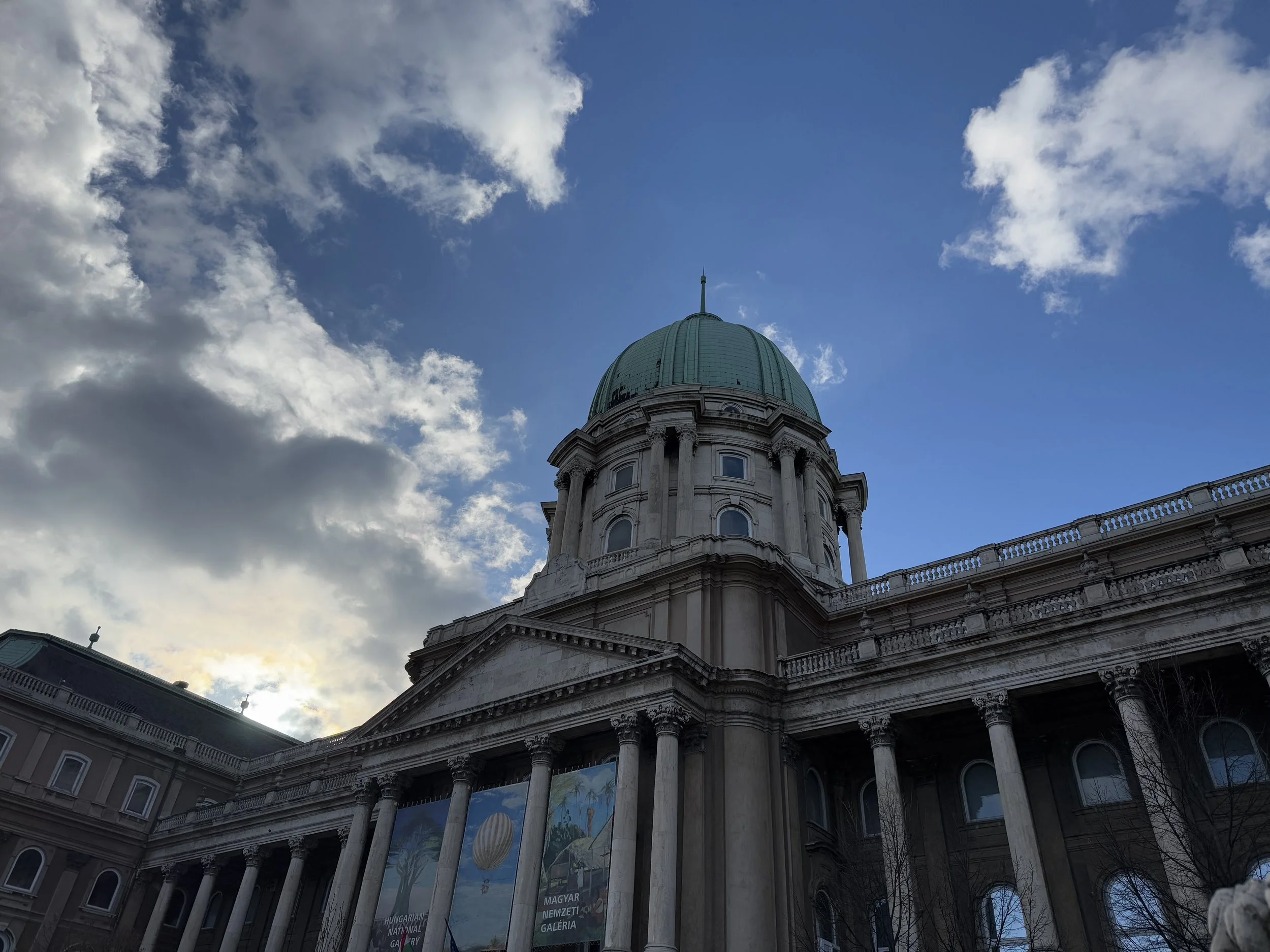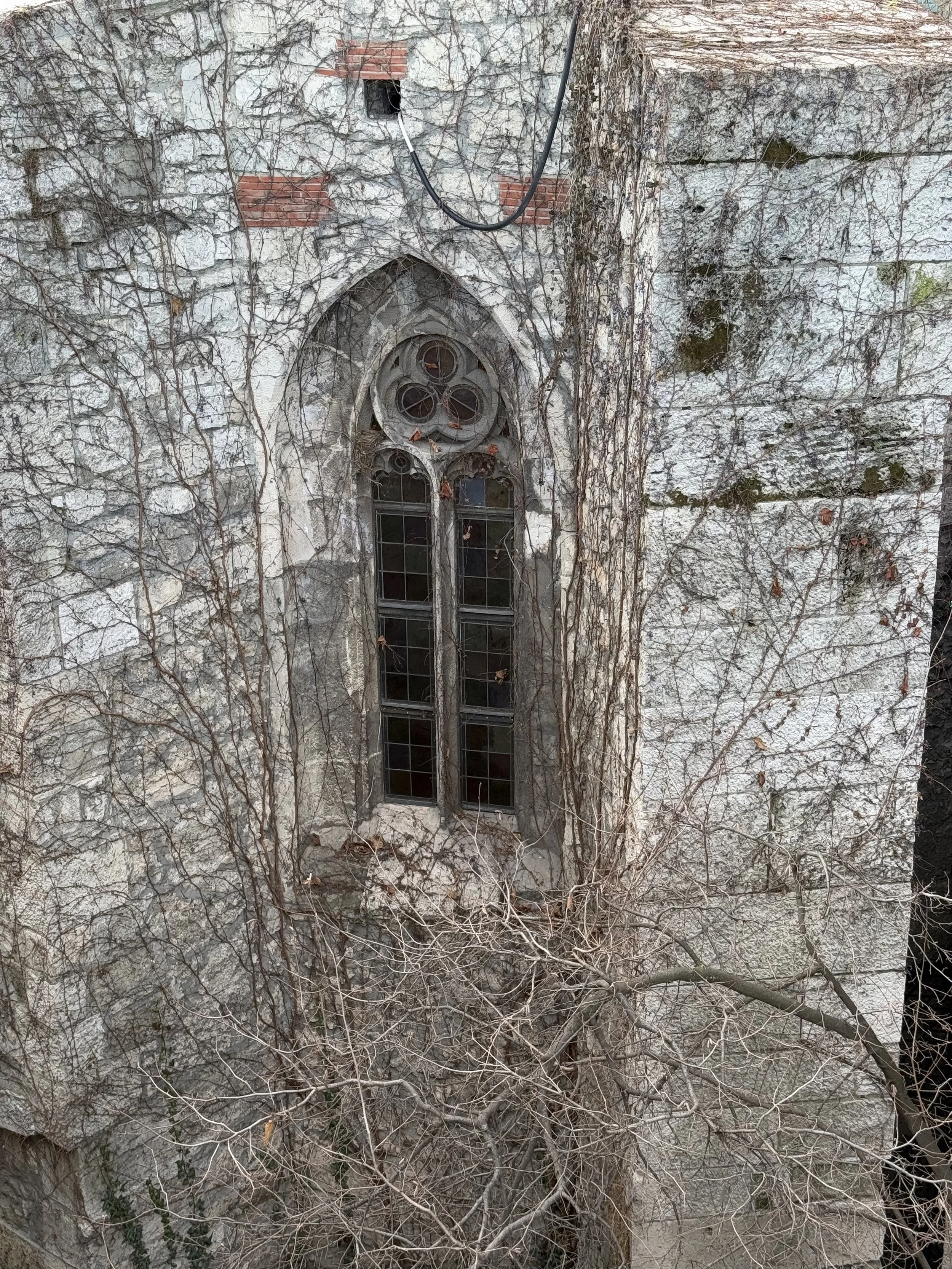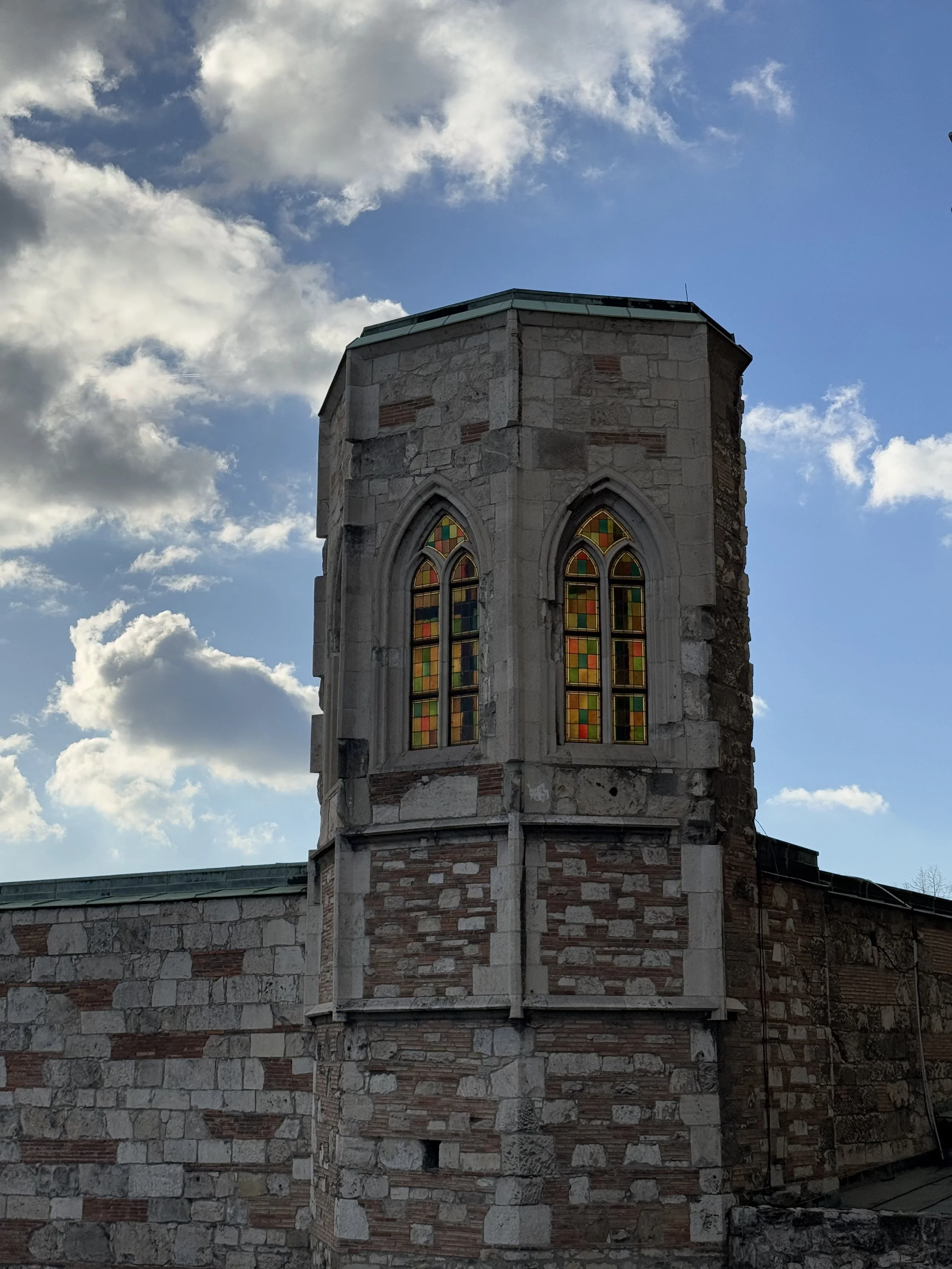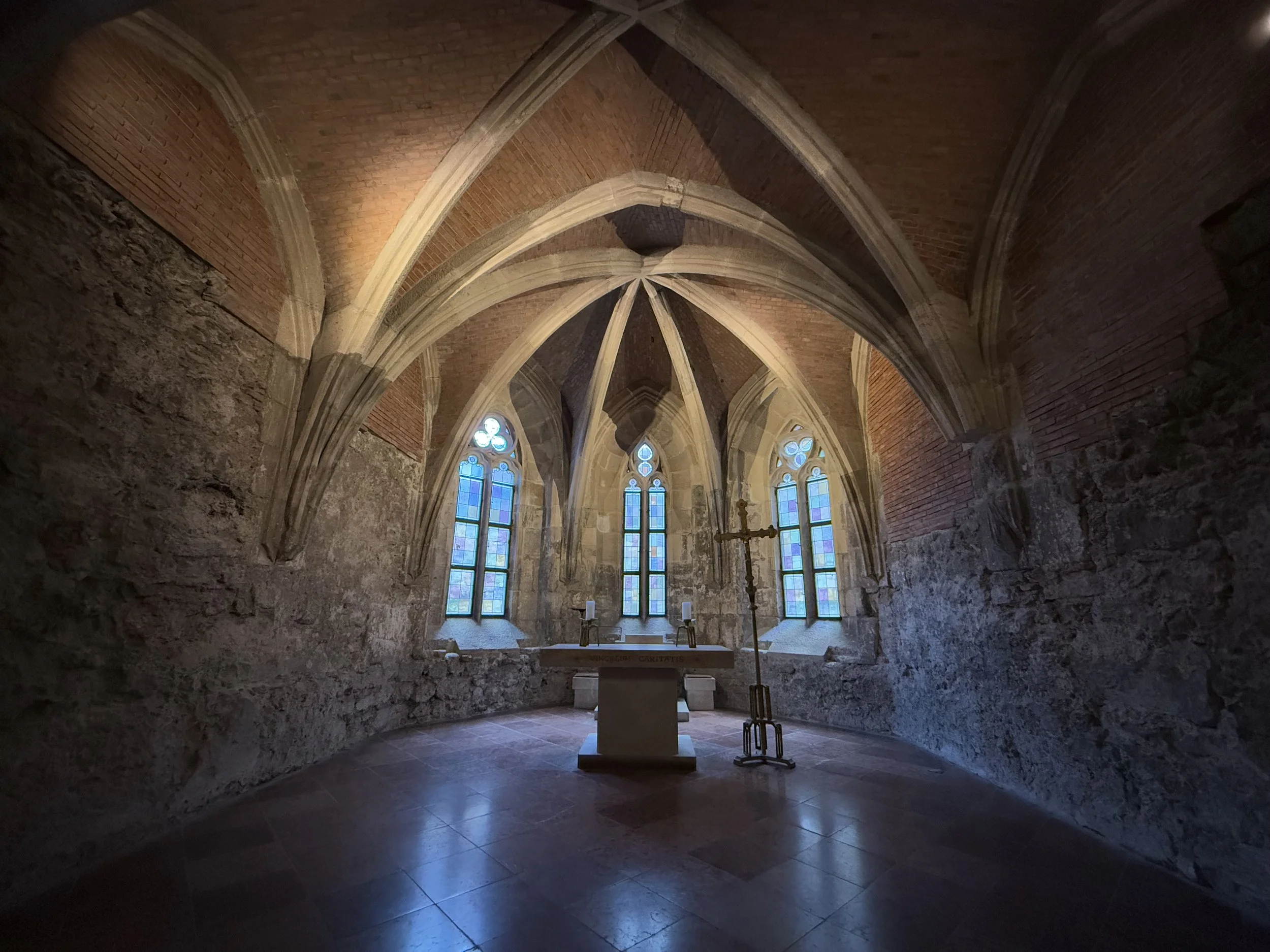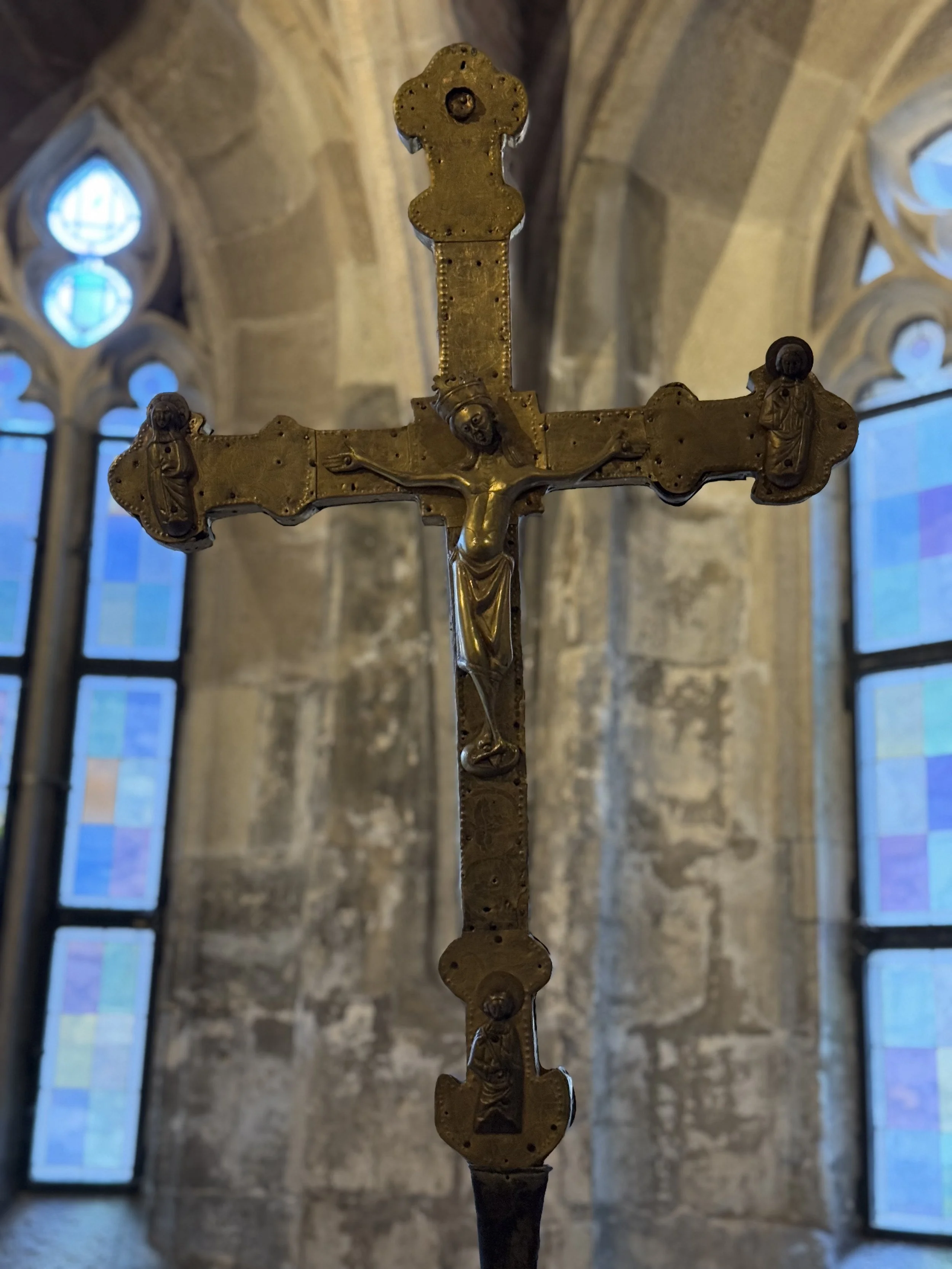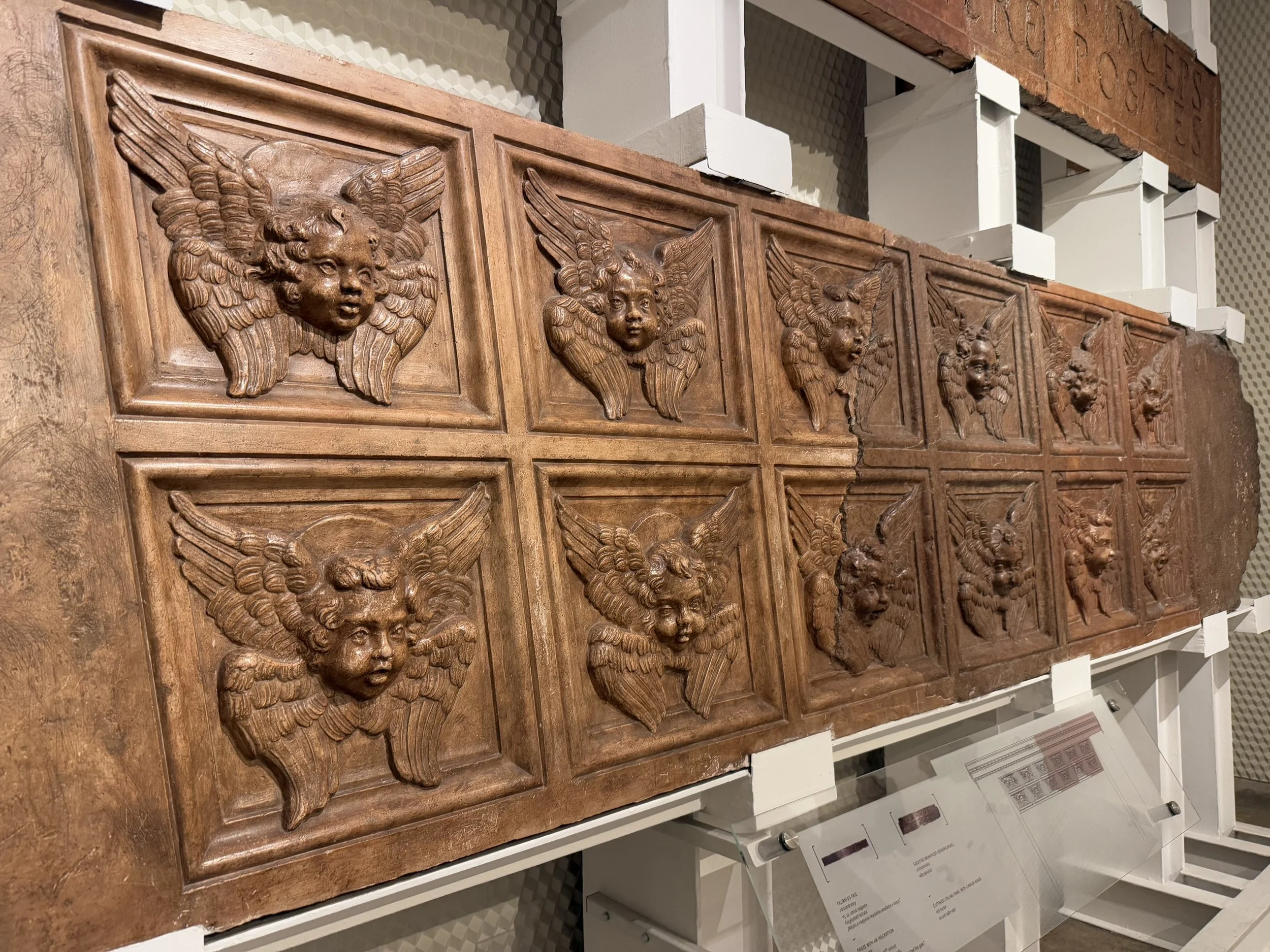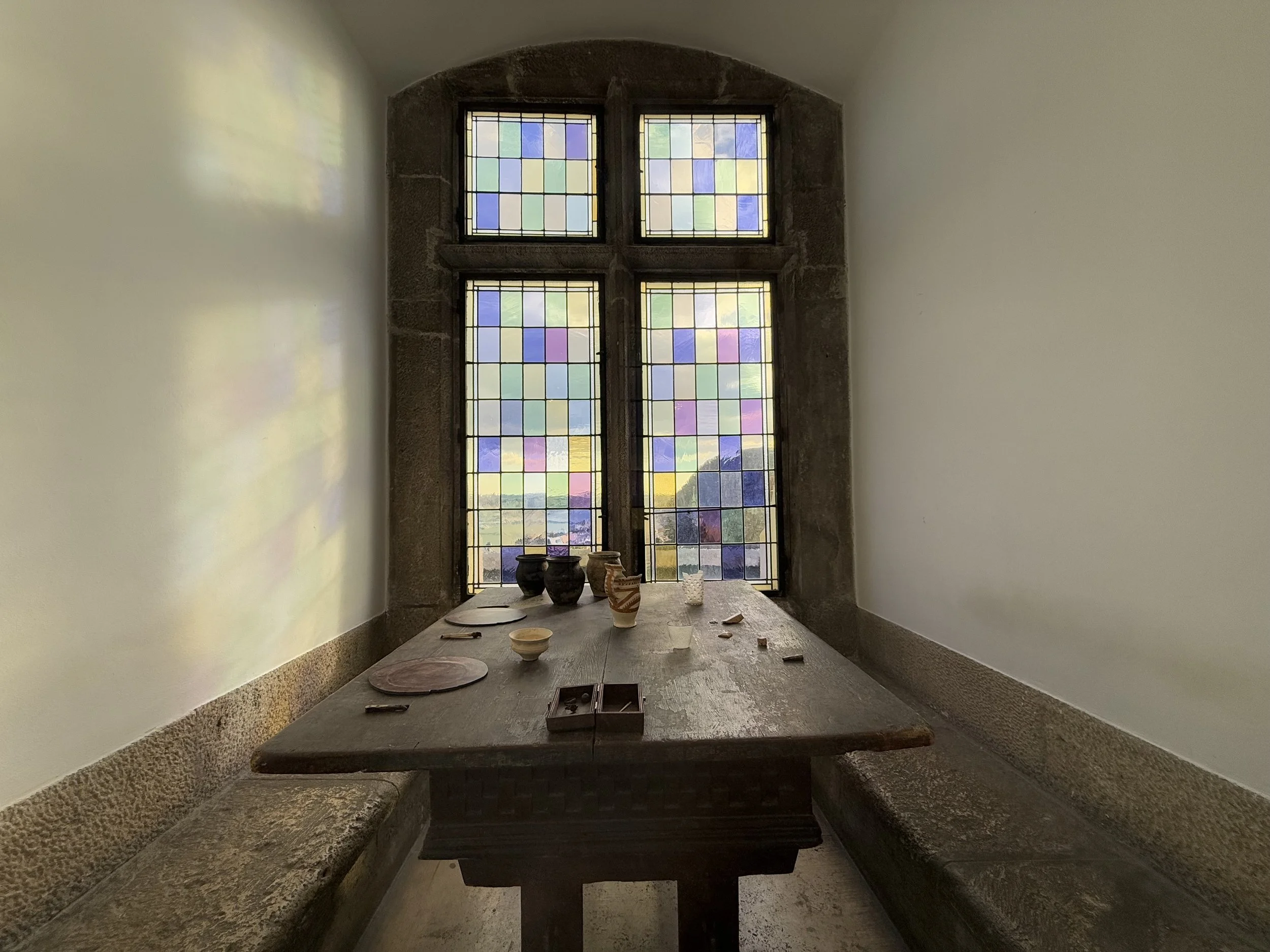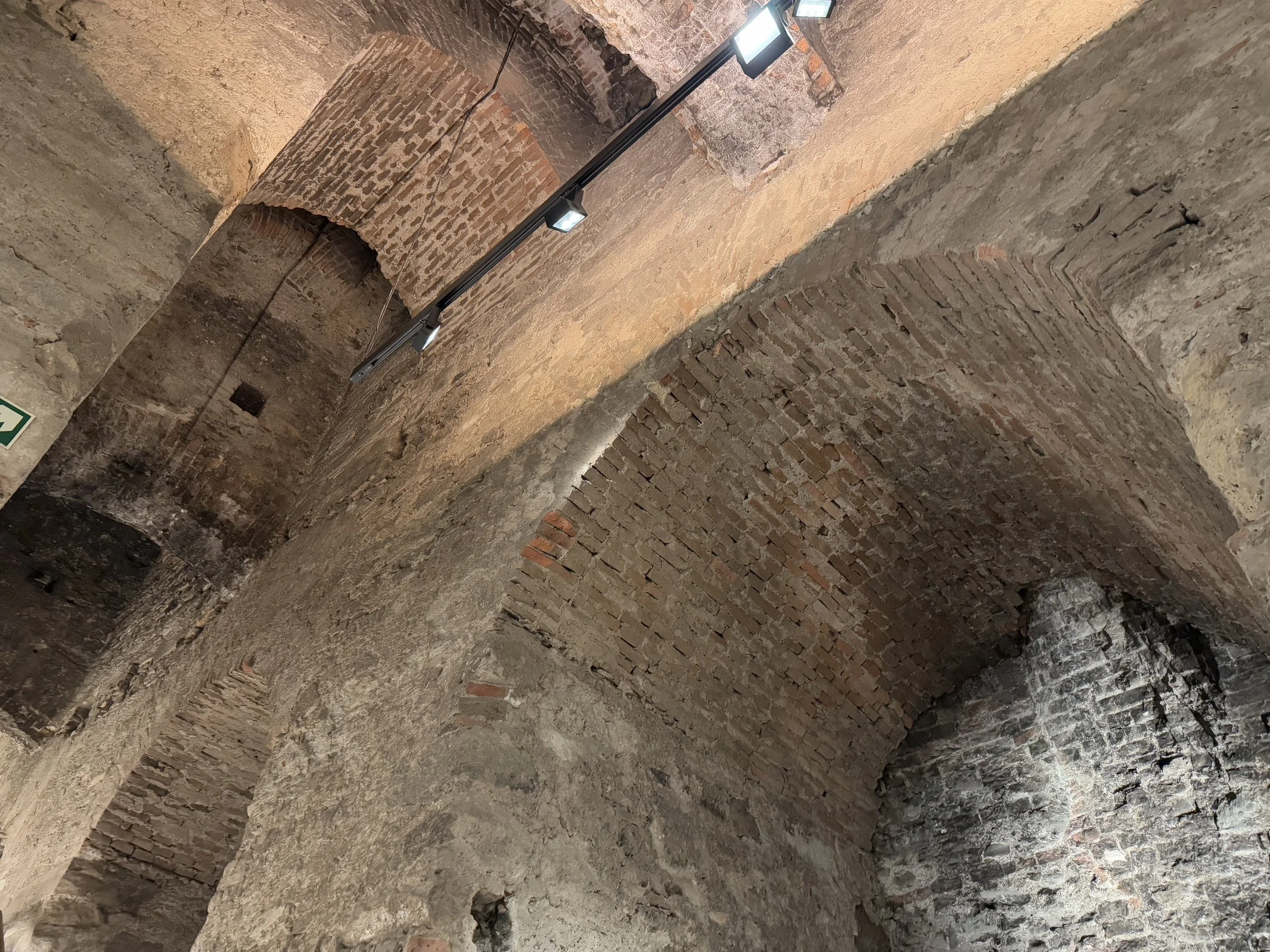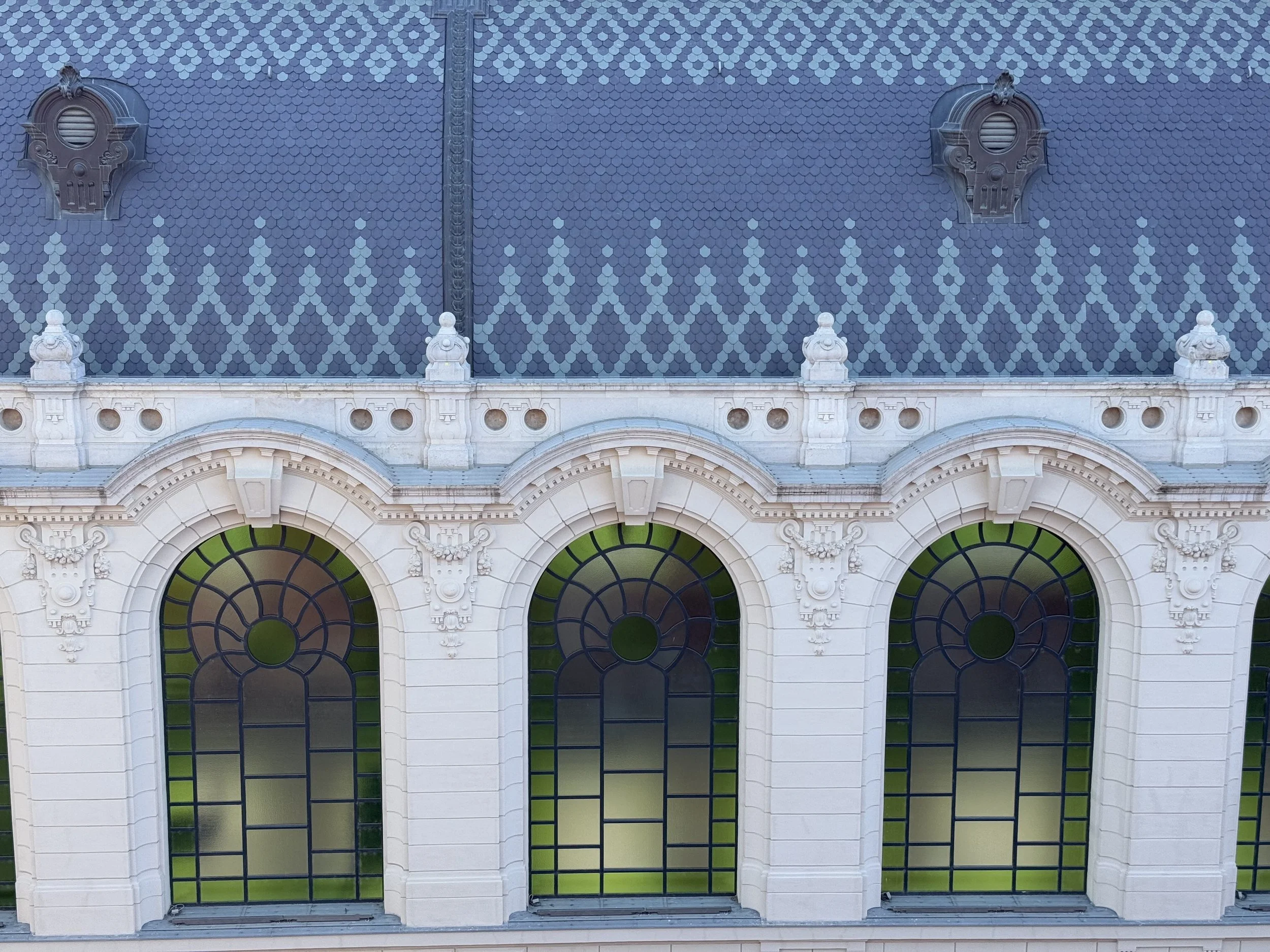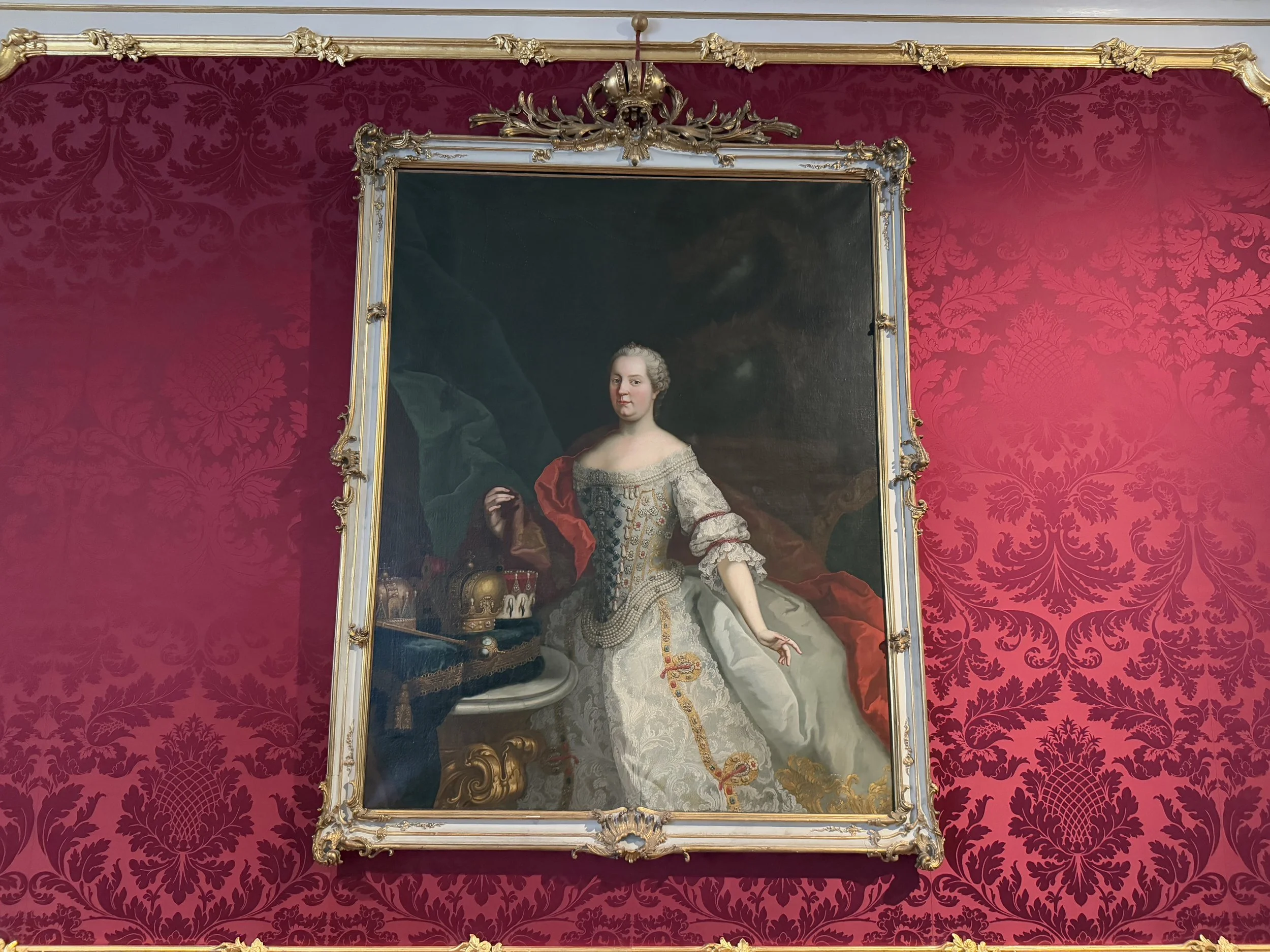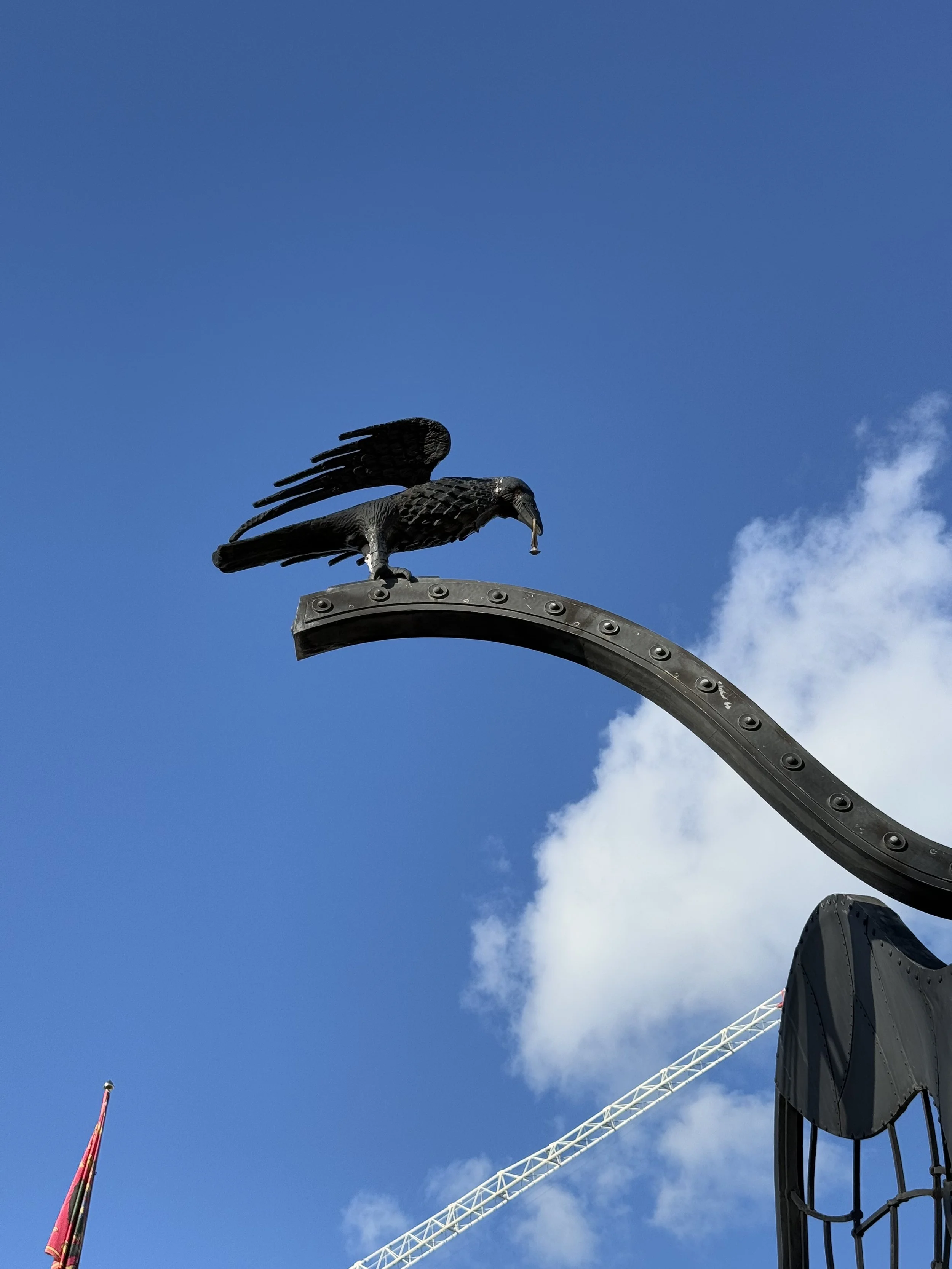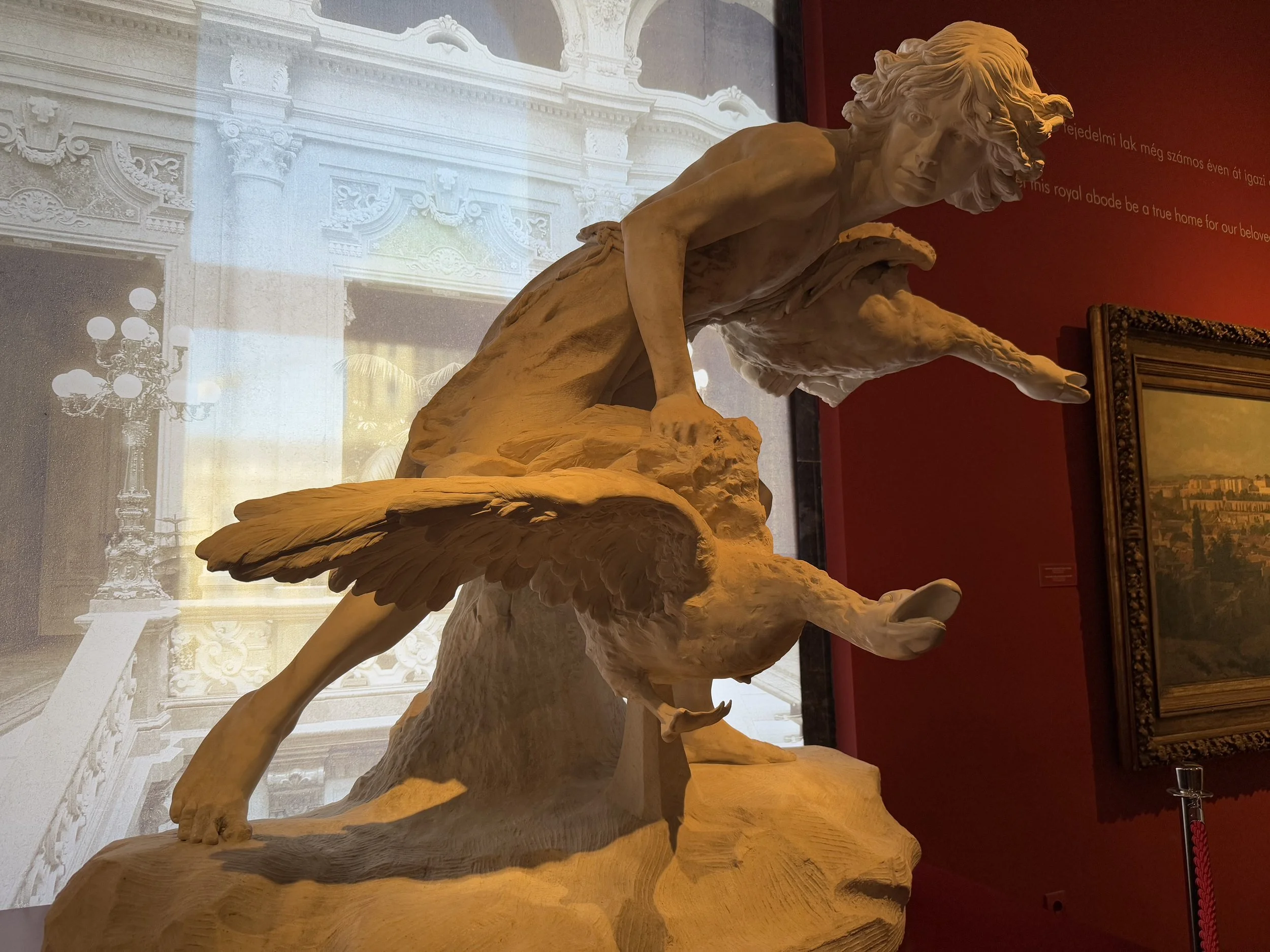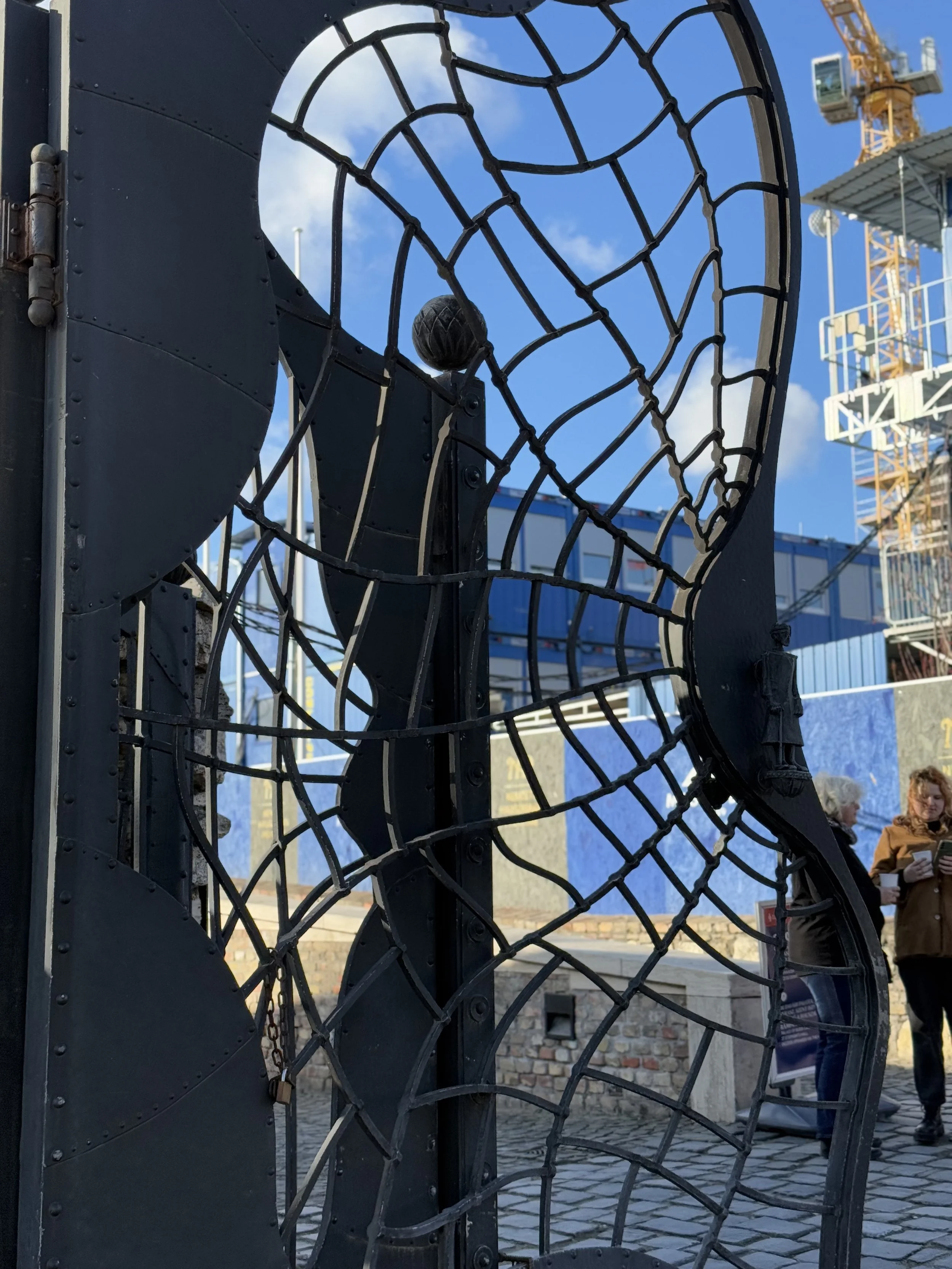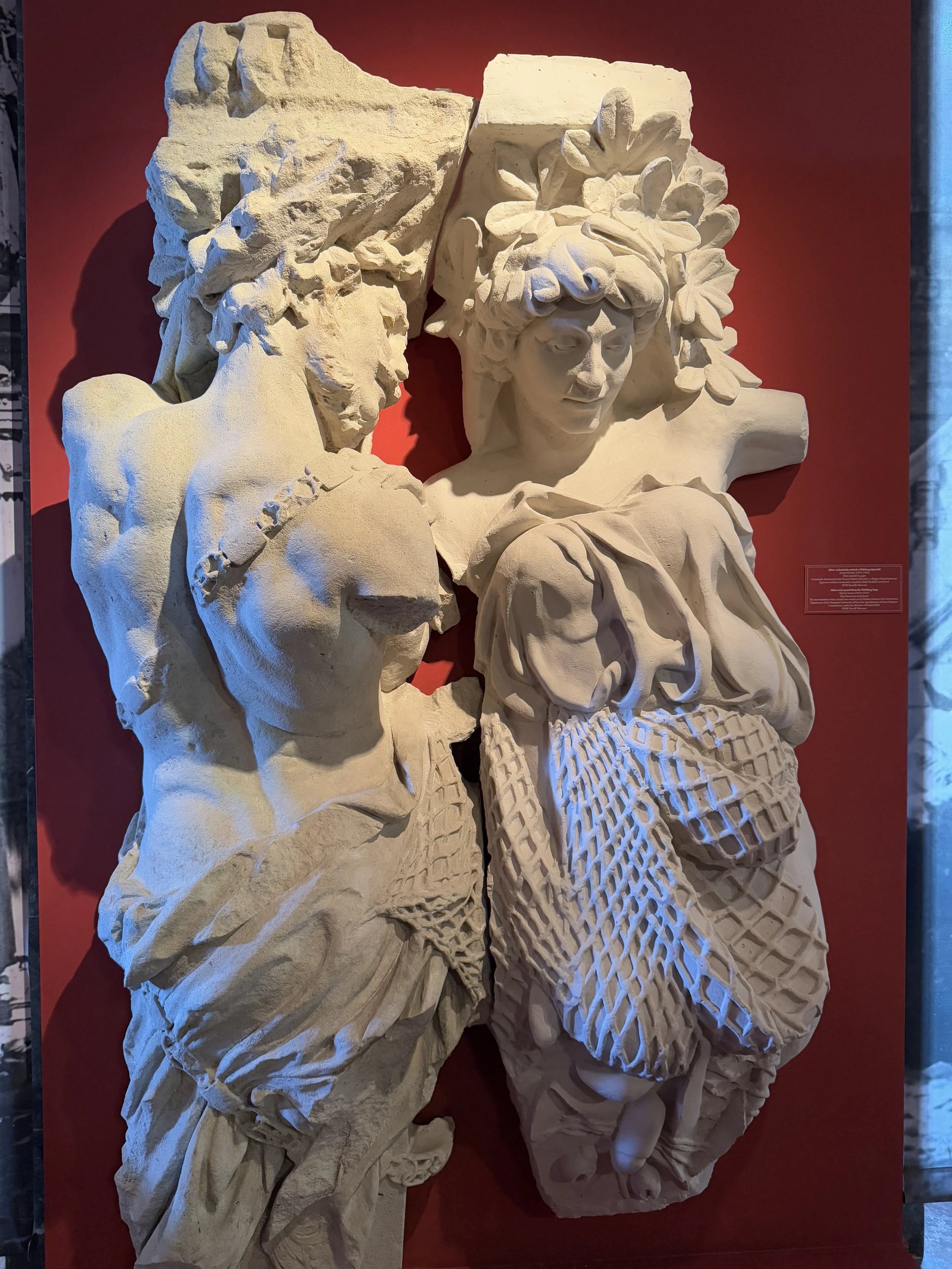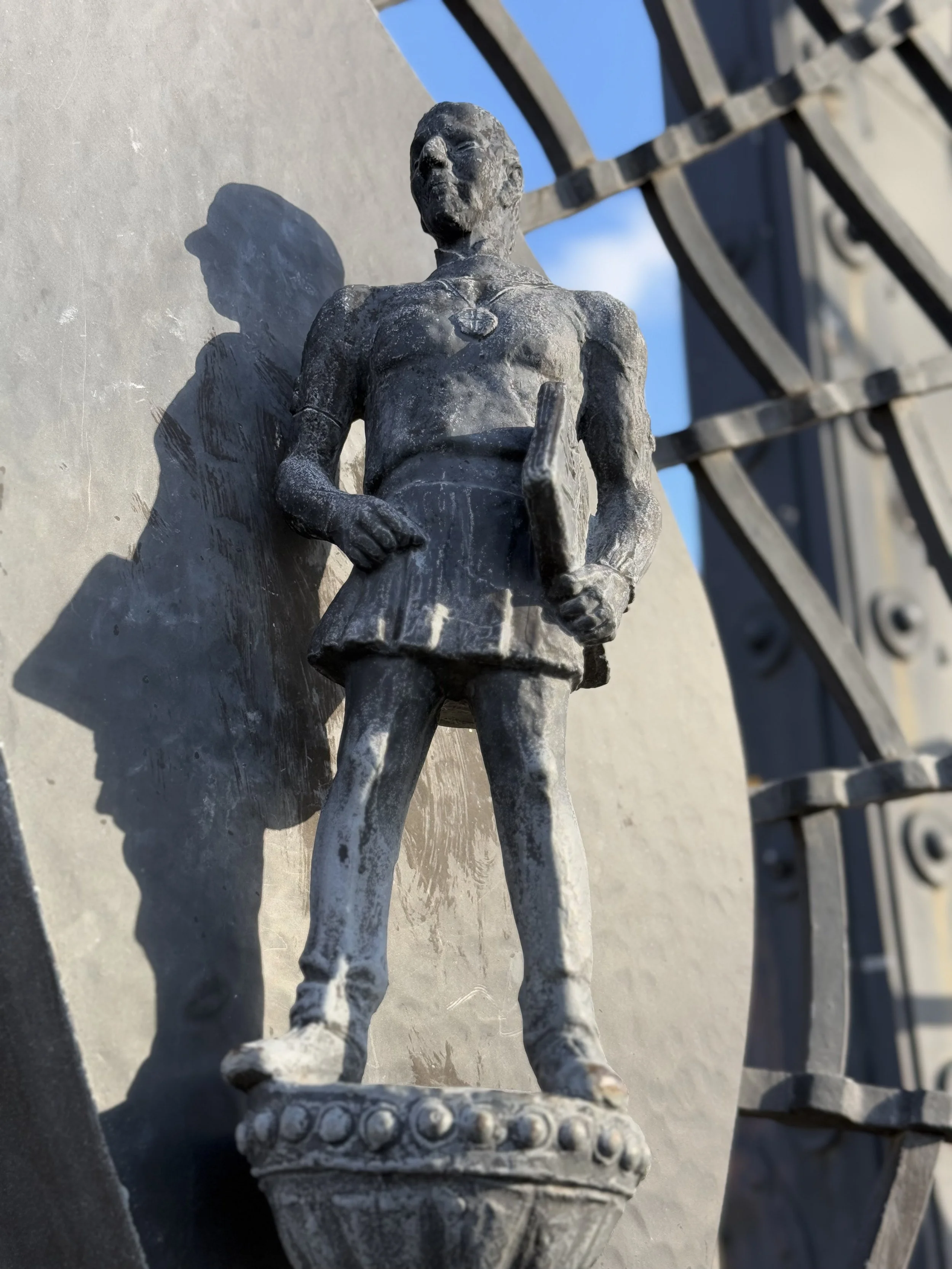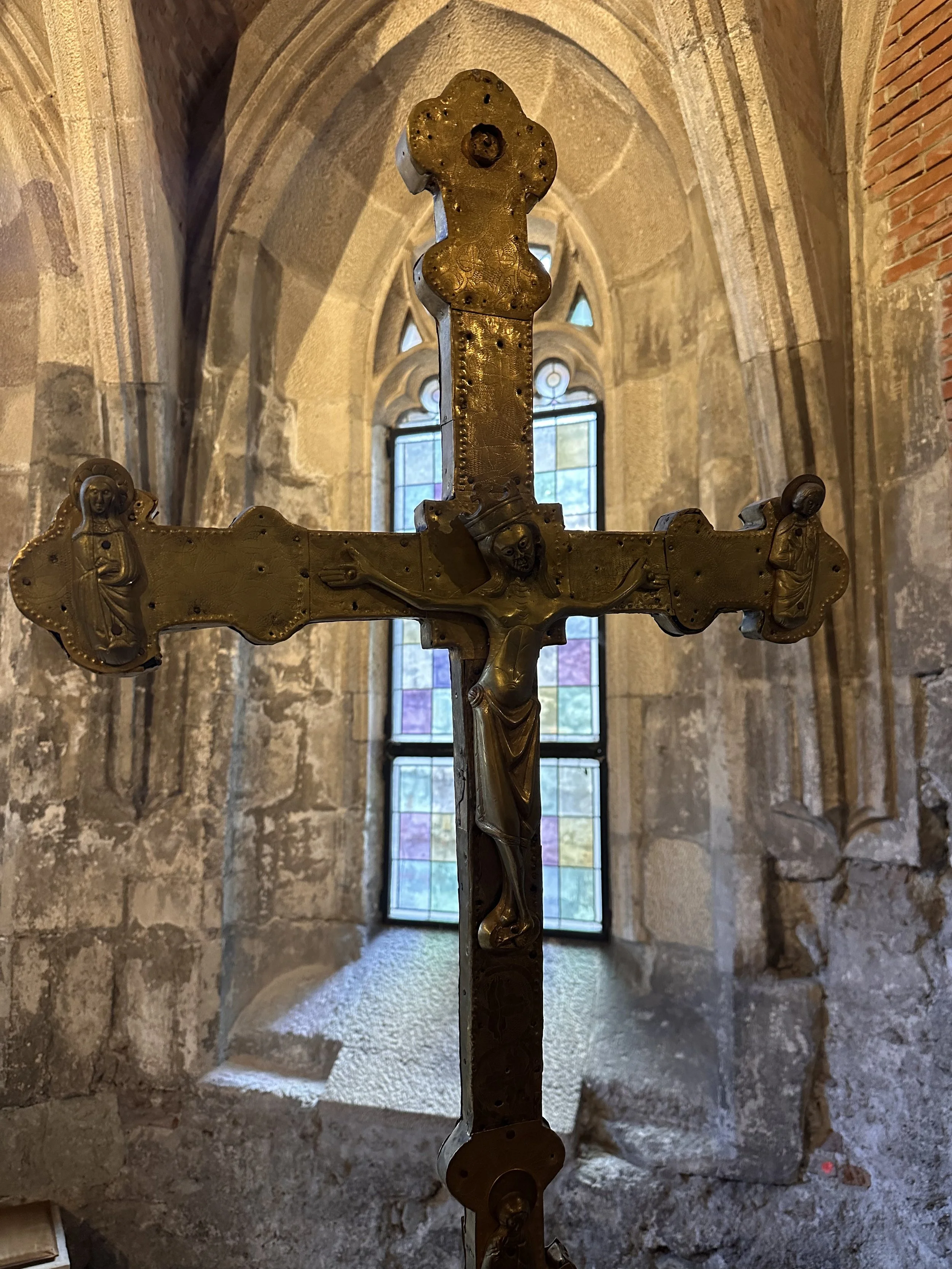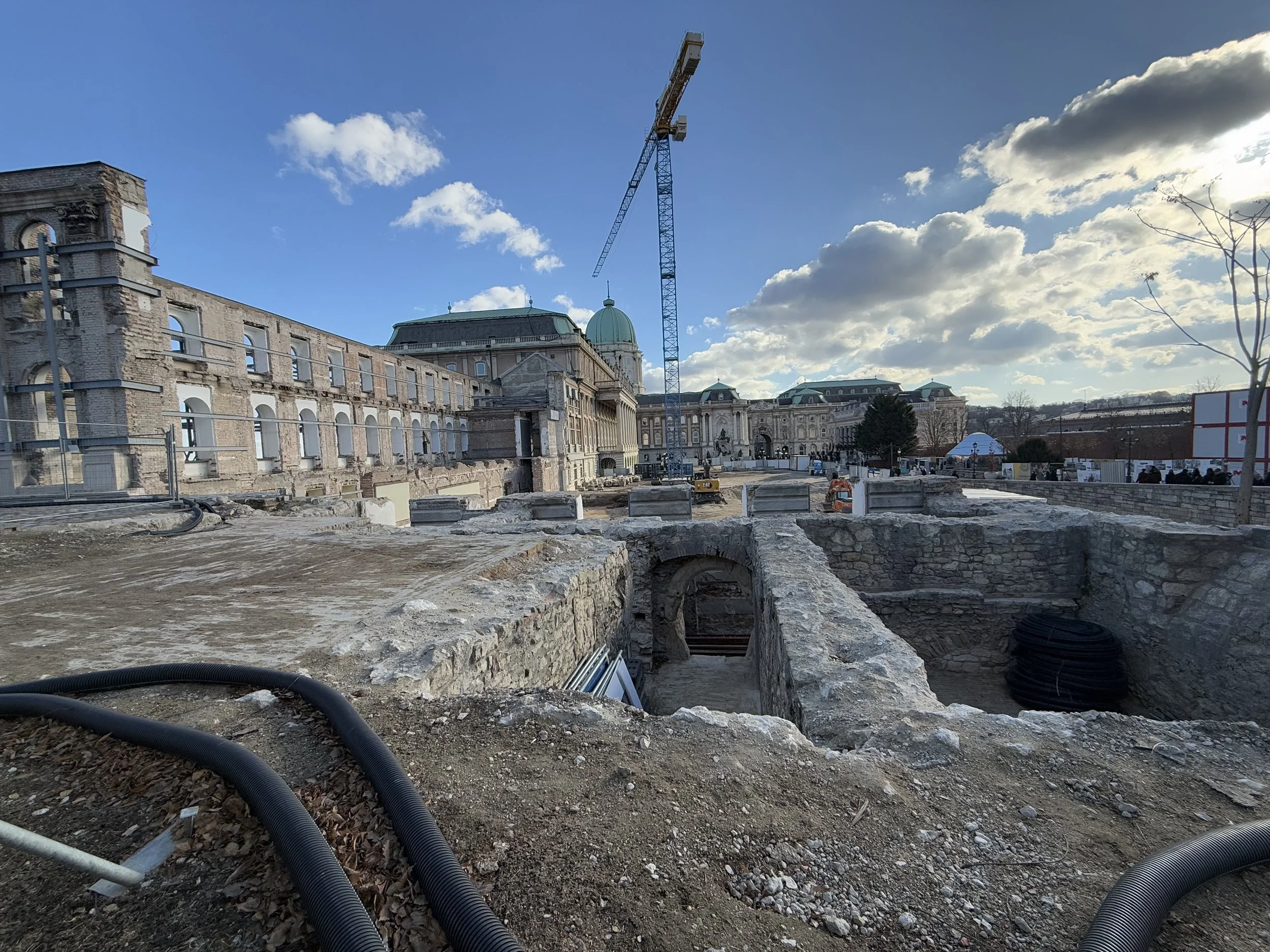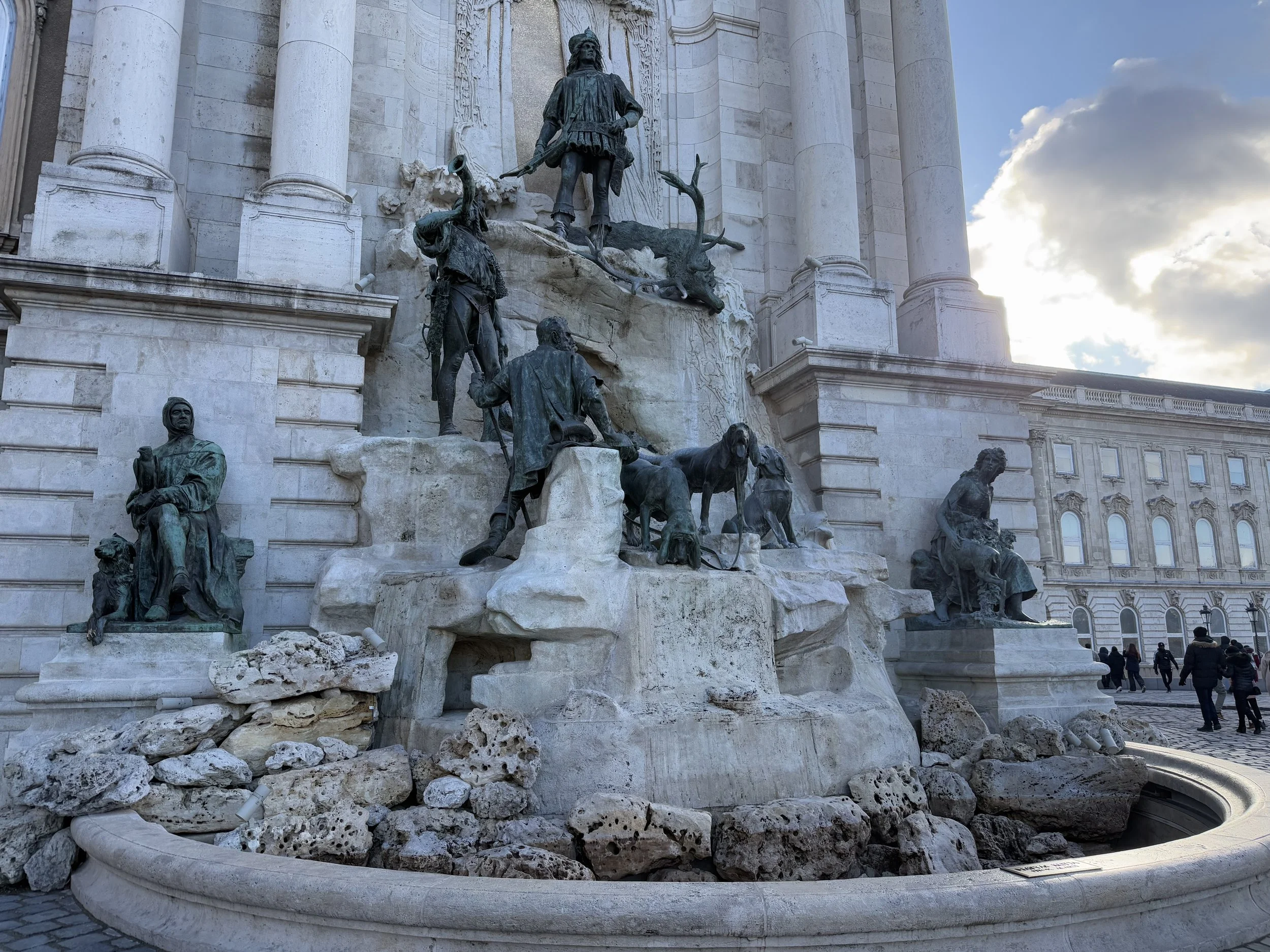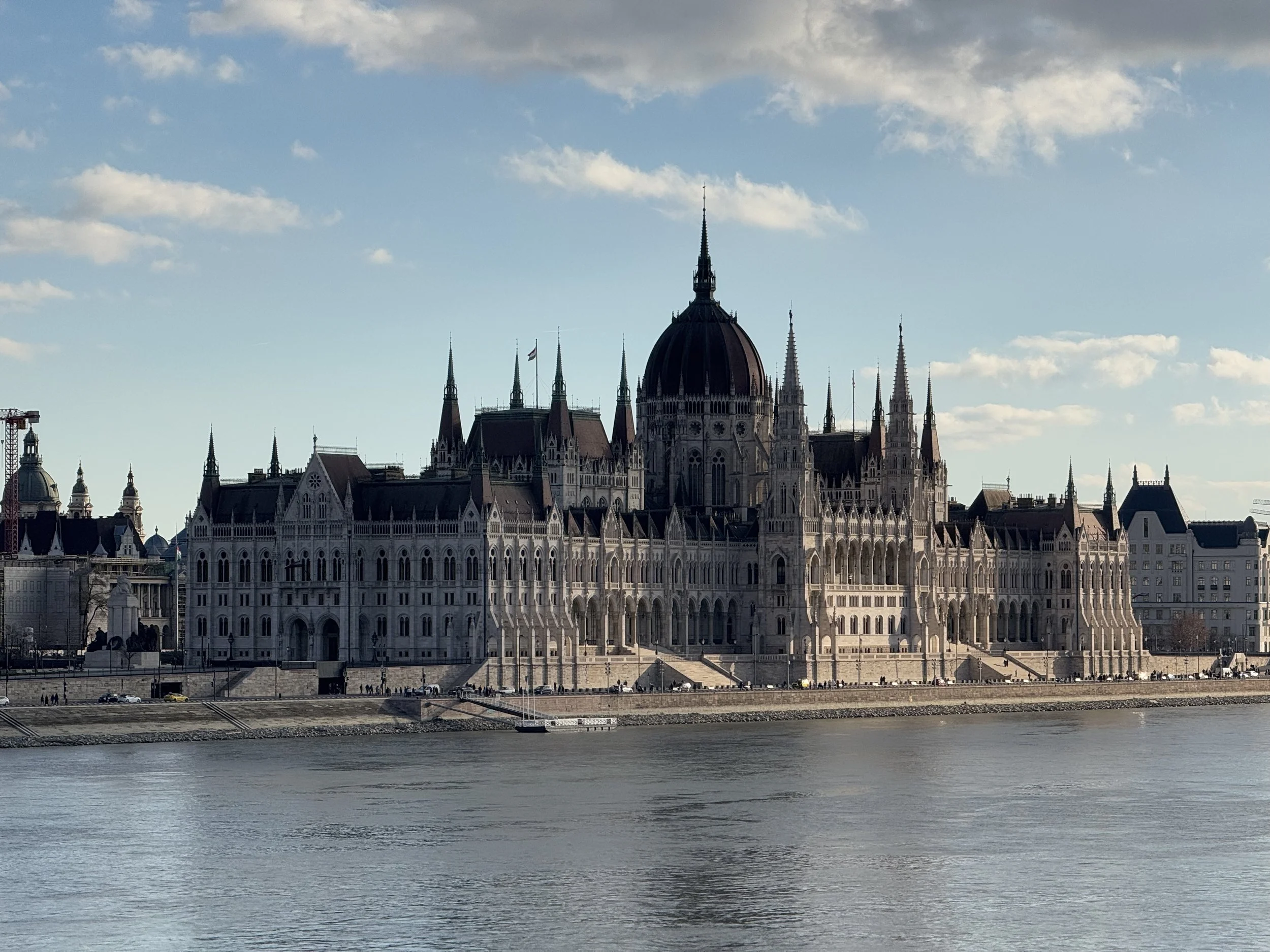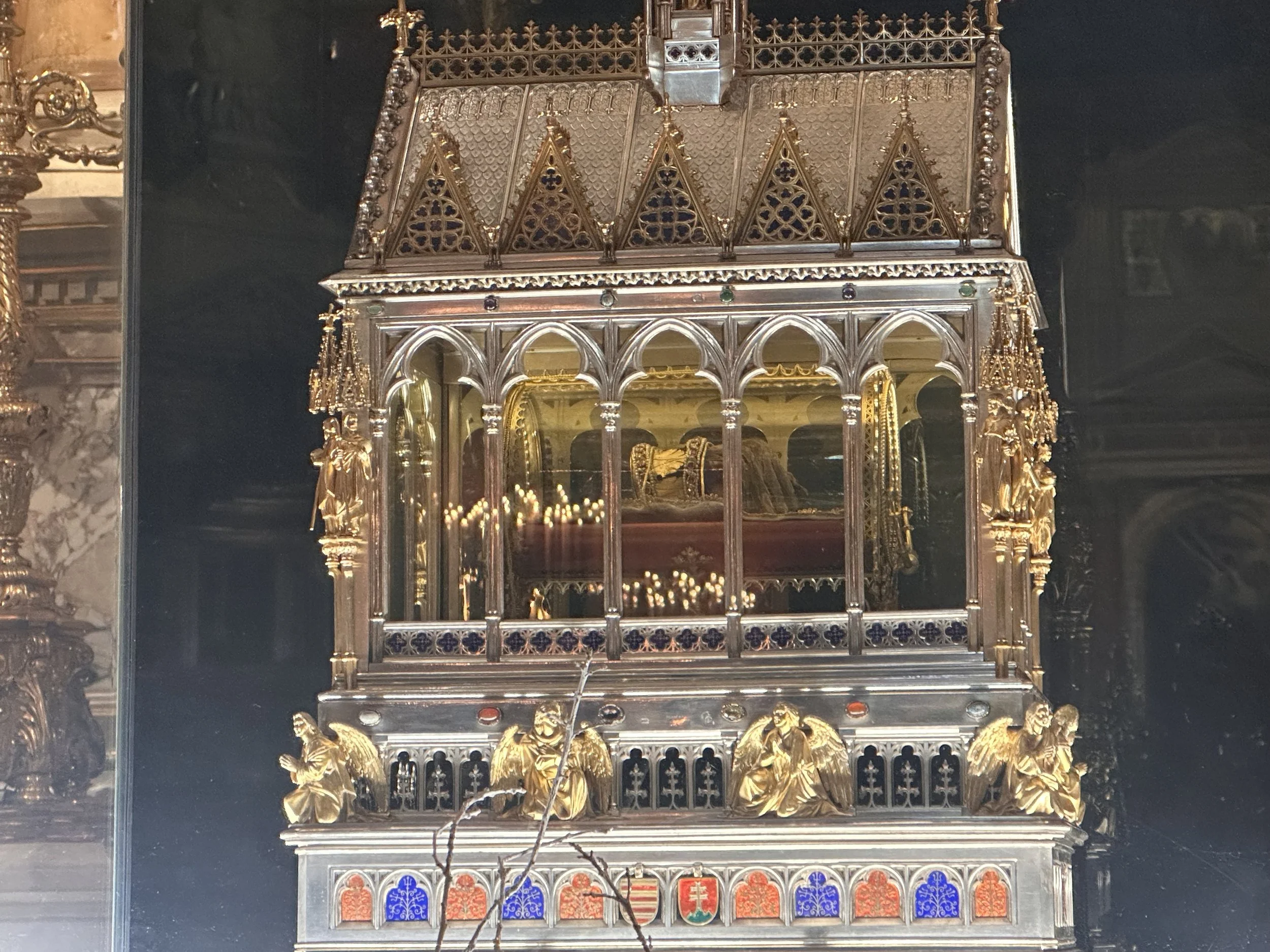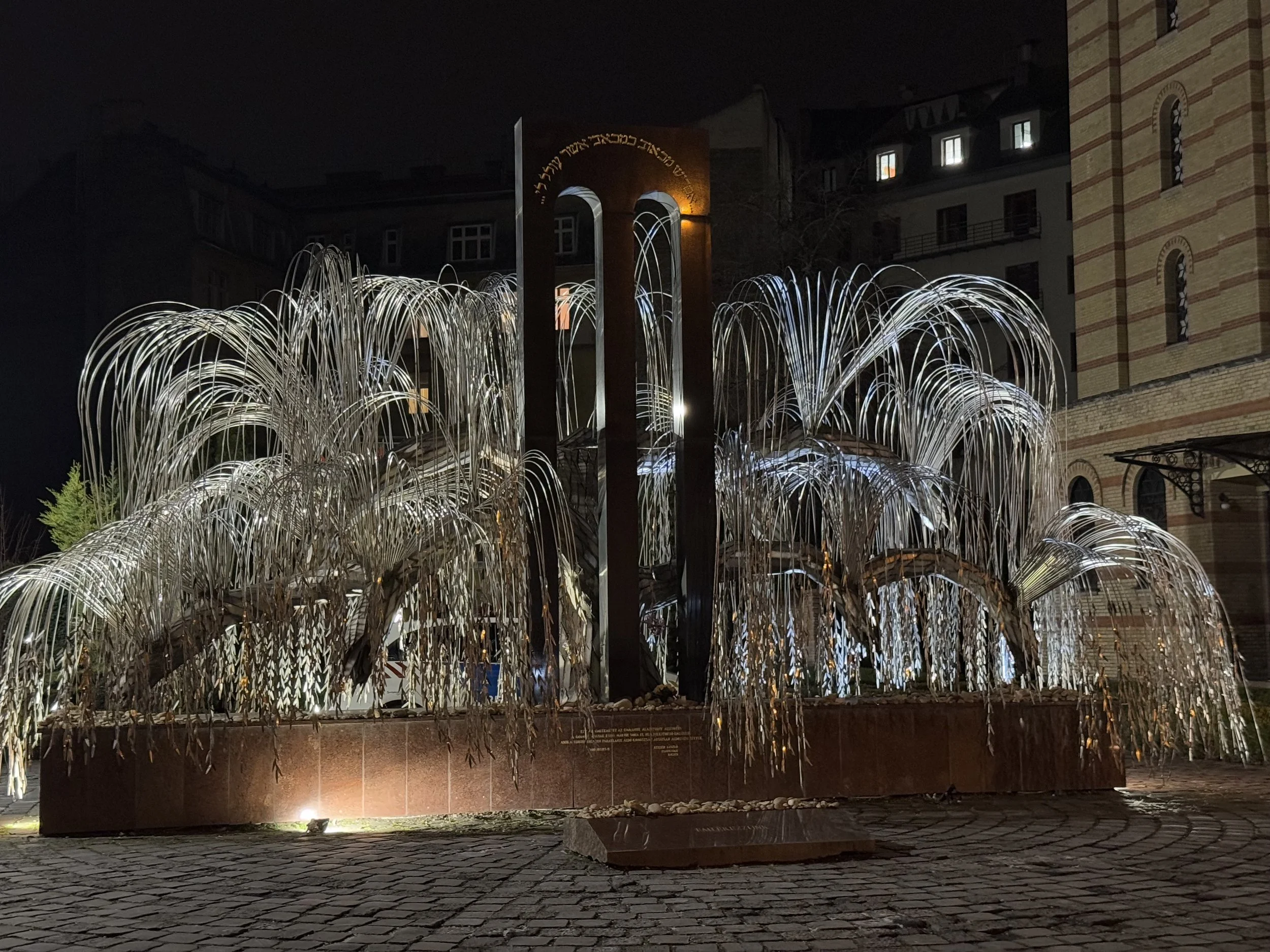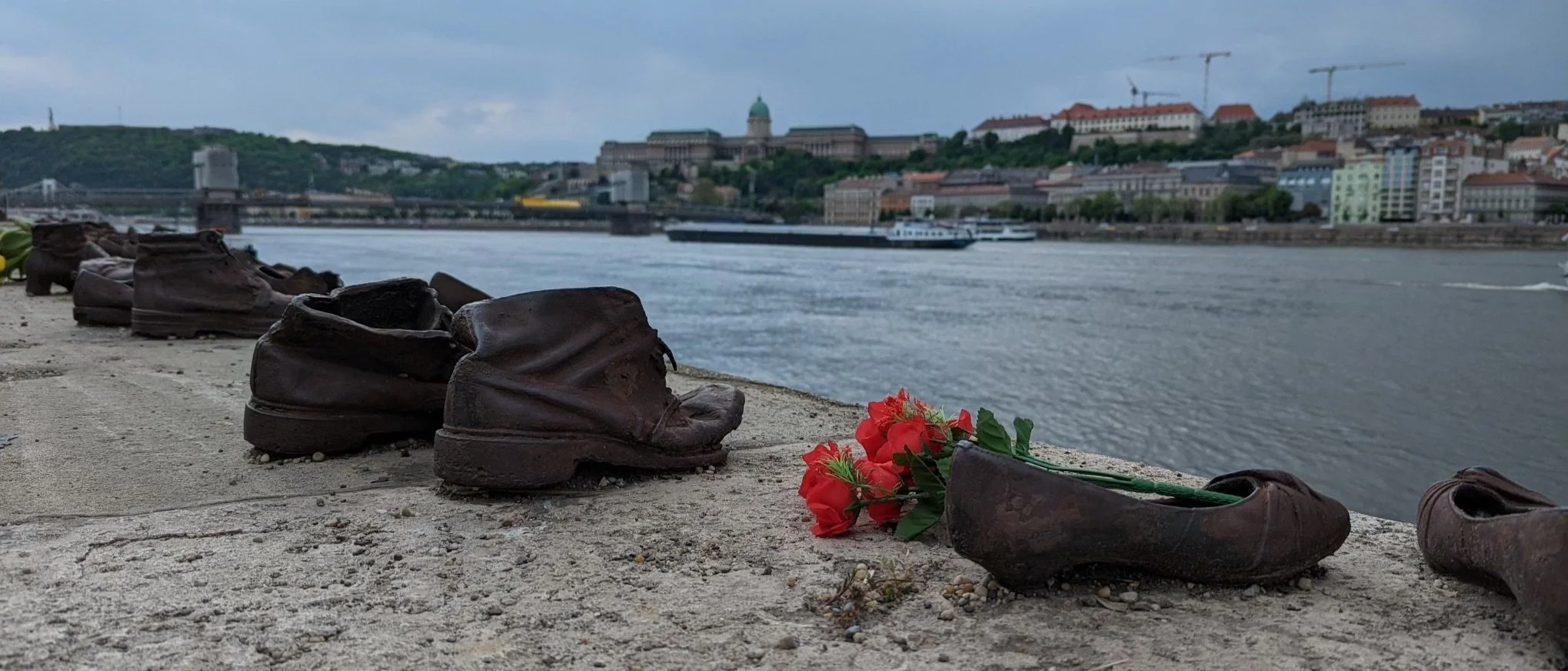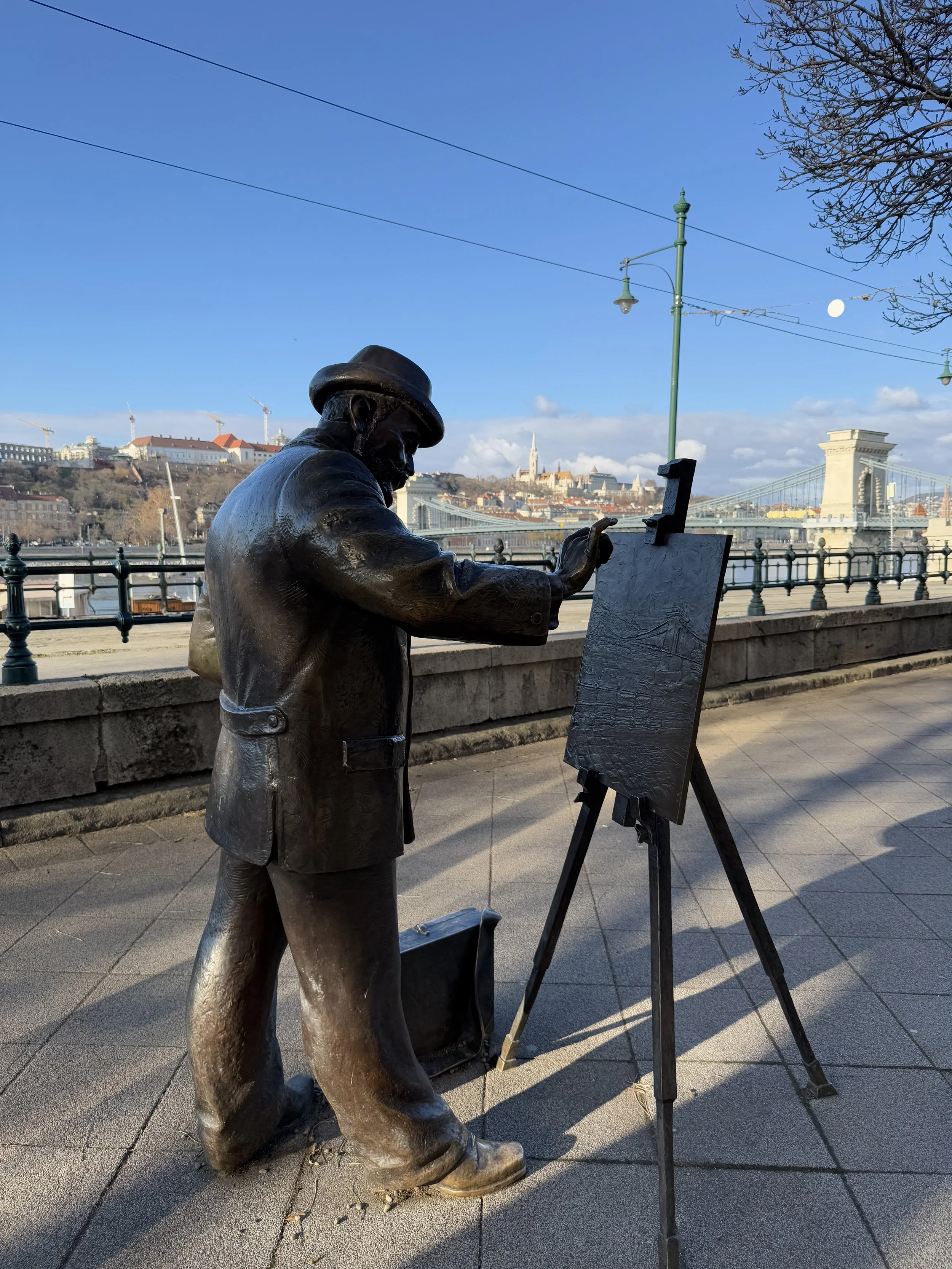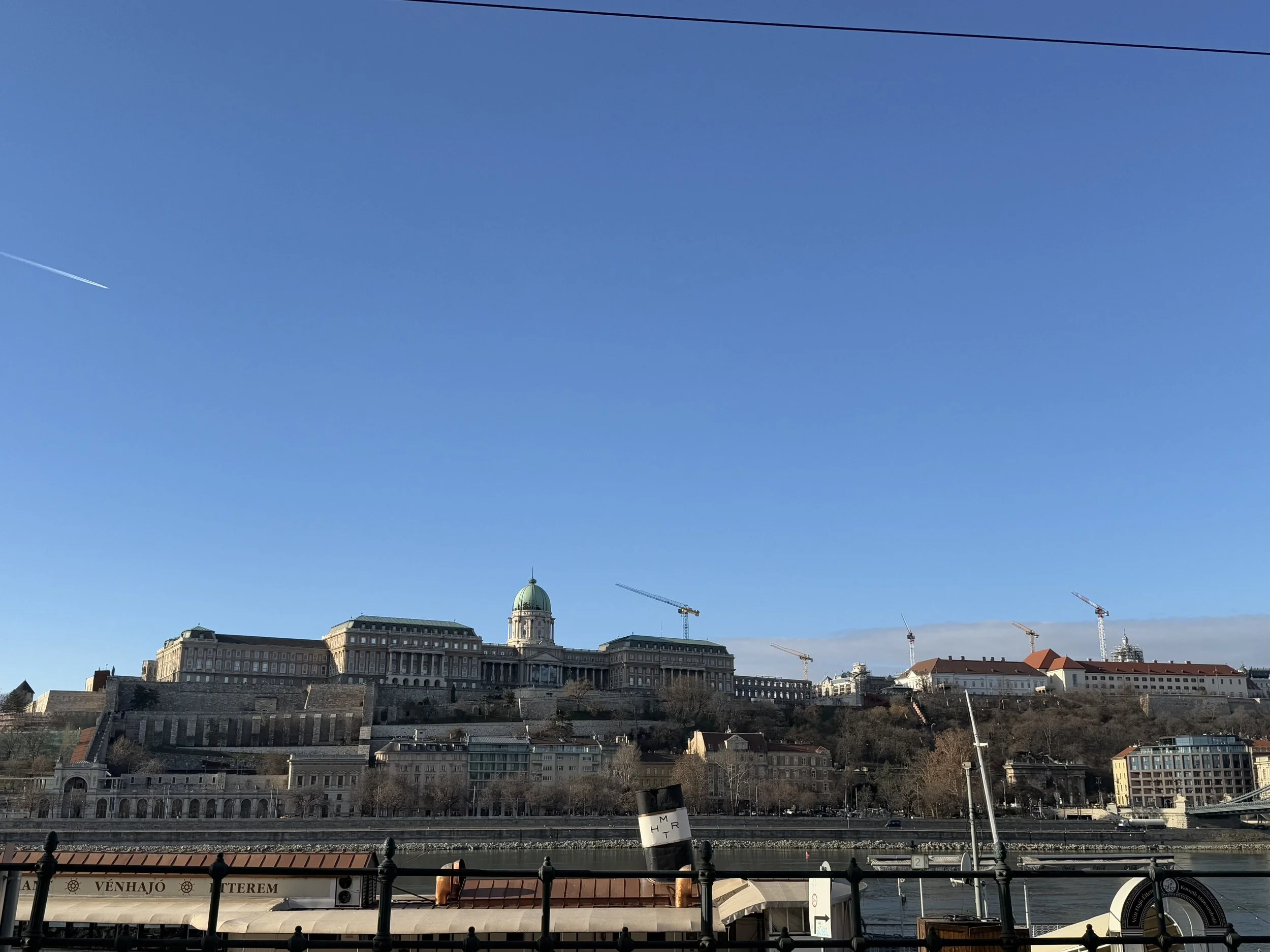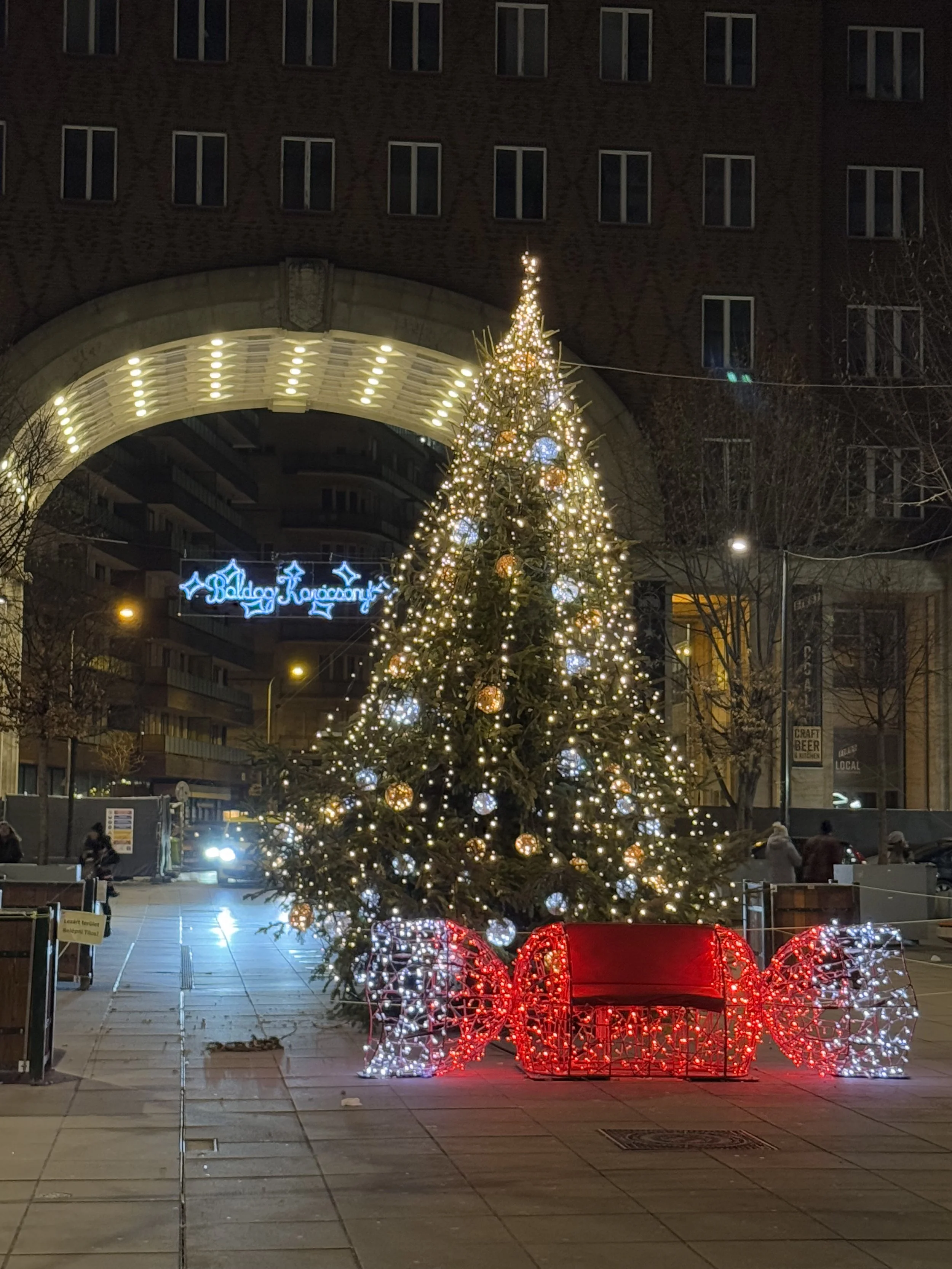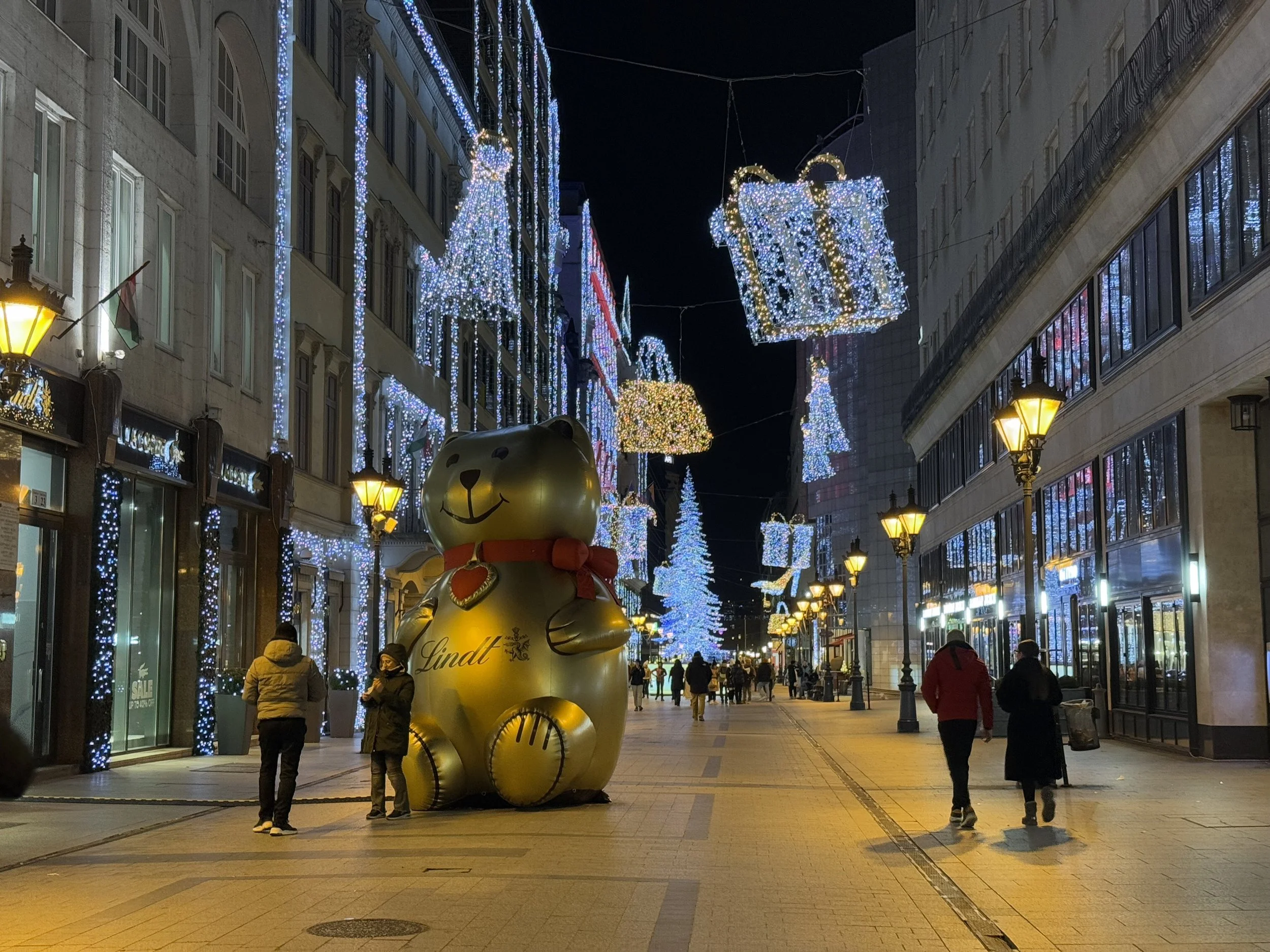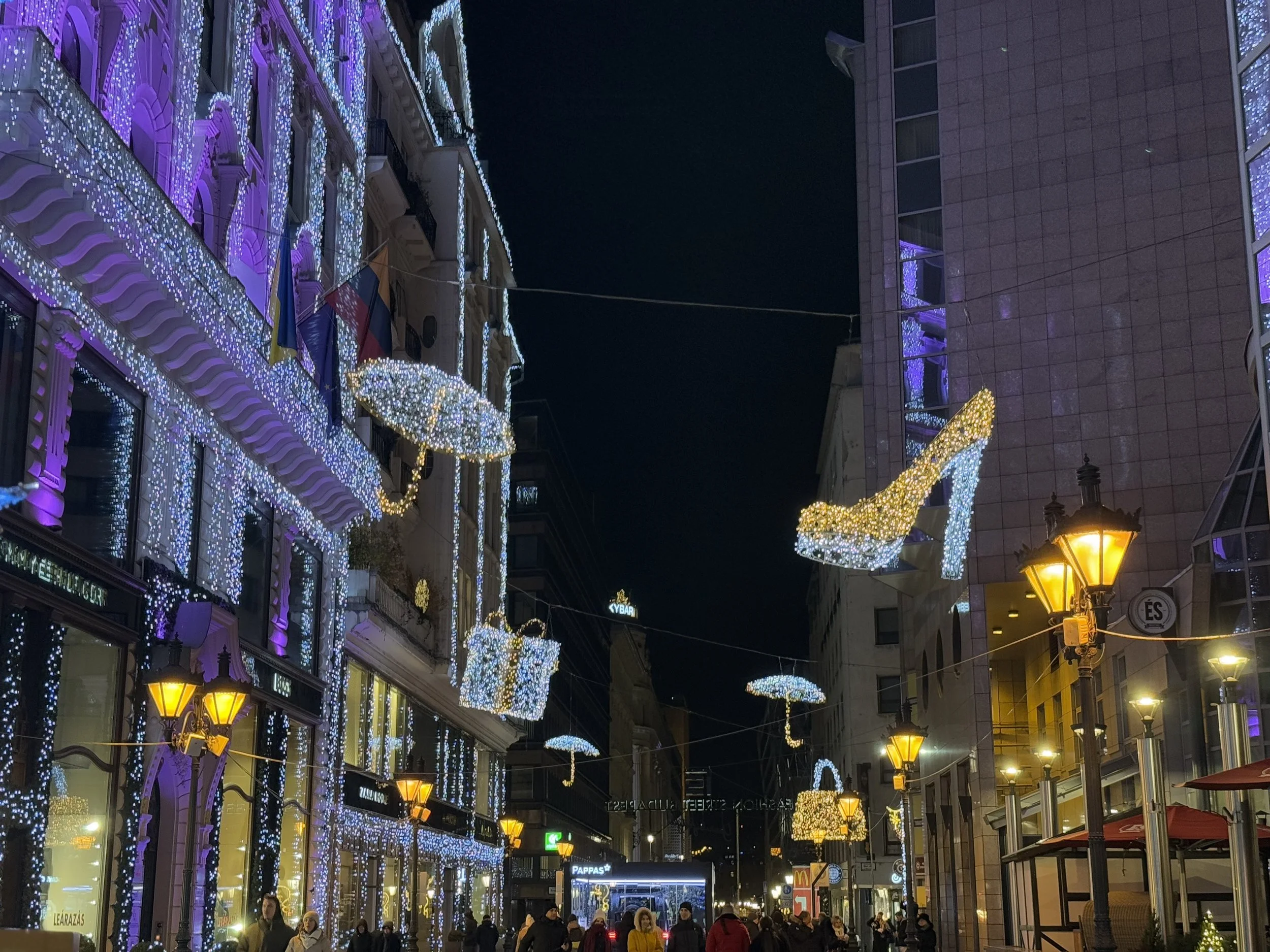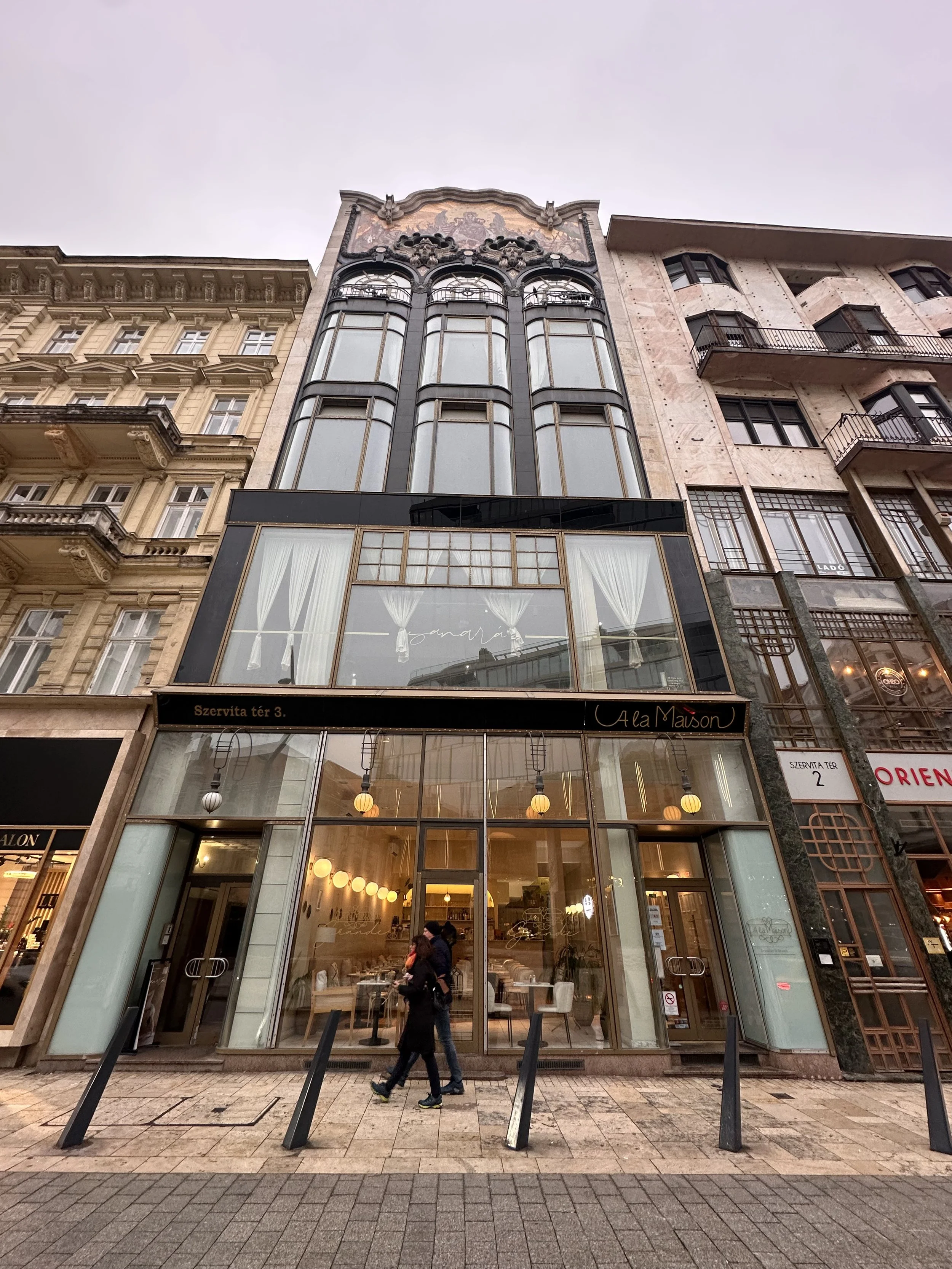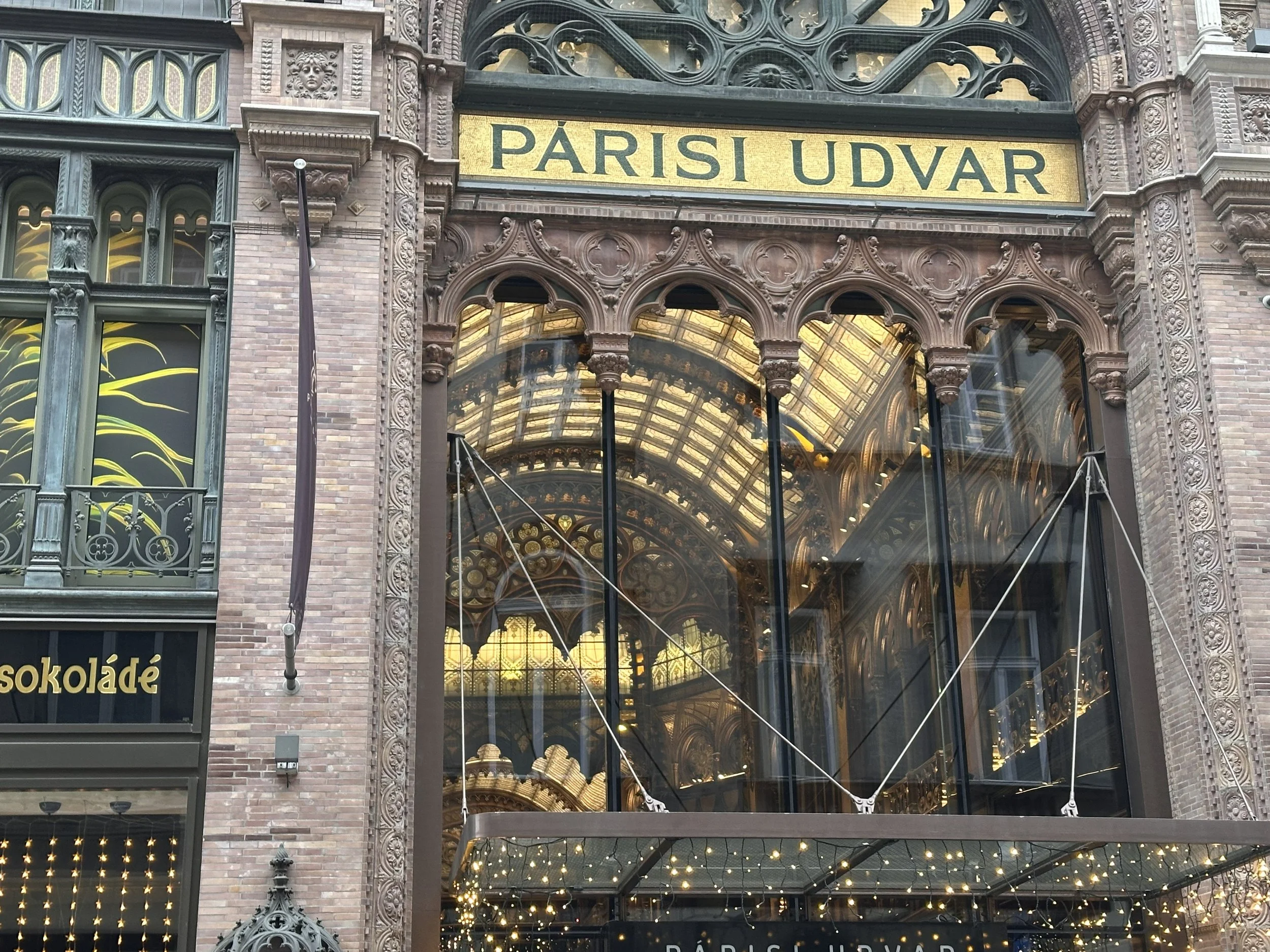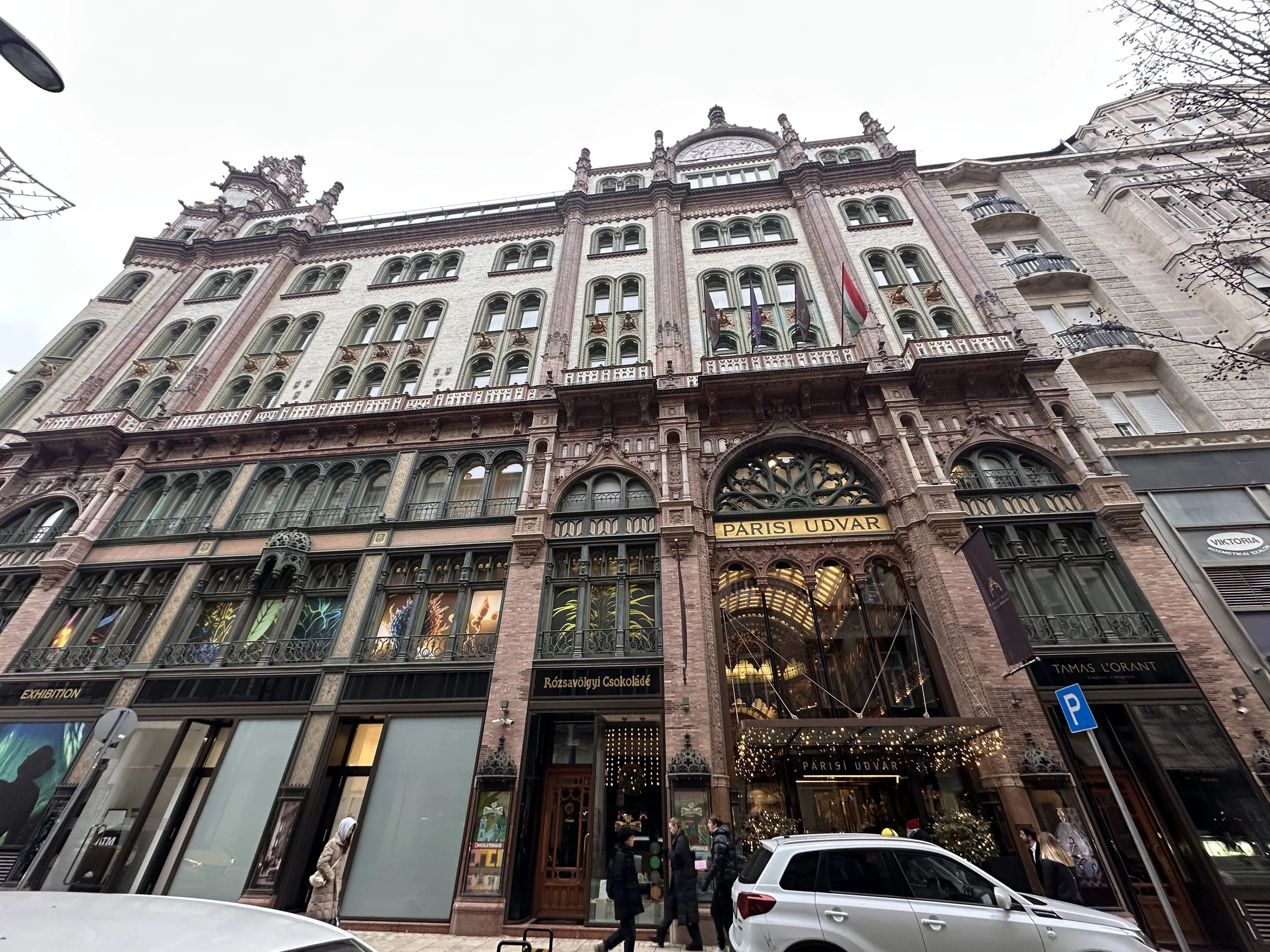Exploring Budapest, Hungary
Time needed in this city; 3 nights
I am still trying to find the words for Budapest, other than it is now one of my all-time favorite European cities ever. There is something about the energy here that makes it a place you don’t want to leave willingly. It’s safe, clean, and beautiful with so much to do! Our suggestion though - go in the fall, which is arguably the best time to be here to not just enjoy the temps, but all of the gardens as well.
The below information is a complete guide of the best places to stay, the top rated places to dine and drink, and all there is to see and do. We’ve also included transportation tips, as well as a summary of the history of this beautiful city!
Jump To:
Where to Stay
Room 631 at InterContinental was a King Junior Suite with the most stunning view you could have from a hotel room. With our Diamond Elite status, we were warmly welcomed with a tray of snacks, as well as a marzipan of the Rubik’s Cube (which was invented in Budapest).
The hotel is centrally located to quite a bit and offers some wonderful dining options as well. It’s a great choice of place to stay!
other recommendations
Where to Dine & Drink
Arany Kaviár Étterem (Castle Hill)
Dishes infused with different varieties of caviar.
Aranybástya (Castle Hill)
Per their site, “The Aranybástya restaurant offers one of the most beautiful panoramic views of Budapest in the heart of Buda Castle! With our special menu and Hungarikum menu we would like to make your stay unforgettable! A pinch of history, a big dose of expertise and a dusting of panorama - this is the Aranybástya!”
Babel
Babel represents the perfect blend of tradition and modernity. Its walls still show marks from the 1838 Great Flood of Pest, yet it’s also a chic, stylish place. The Michelin-starred menu offers a multi-course tasting menu, comprised of refined, delicate modern dishes with subtle, carefully balanced flavors, which at the same time, exhibit references to their Hungarian heritage.
Beerstro14 Steak House Restaurant
Craft beer & a meat-based menu with dishes like steak, schnitzel & ribs in a roomy, trendy hangout.
BOHÉMTANYA
Borkonyha Winekitchen
A Michelin-starred restaurant serving contemporary cuisine with fois gras dishes & 200 Hungarian wines, in smart mirror-lined dining room.
Bors Gastro Bar
Trendy bistro serving carefully sourced street food & homemade desserts in a snug, funky atmosphere.
Café KÖR
Dining room with warm tones & vaulted ceiling for traditional meaty dishes & Hungarian wines.
Caviar & Bull
Per their site, “Our innovative menu, featuring standout dishes like Molecular Caviar and Nitro Scallops, offers a unique fusion of Mediterranean flavors and modern culinary artistry.”
Centrál Grand Cafe & Bar
From its opening in 1887 to 1944, the café attracted a who’s who of Hungarian poets, artists, scientists, and authors. The café shuttered in late 1944 when Soviet and Romanian forces laid siege to Budapest. At the war’s end, the building required much reconstruction. Repairs sought to restore the café to its original glory, demanding a brick-by-brick rebuild of the entire interior, based on old photographs. The original furniture was salvaged and displayed in the café, including the chandeliers, the grand piano, and the marble-countertop bar. Black-and-white photographs of Hungarian luminaries cover the walls, including writers and philosophers who sat for hours in the café, composing some of the country’s most influential works and theories.
FUN FACT: Legend has it that Frigyes Karinthy devised the theory of “six degrees of separation” and that Gyula Krúdy wrote his Sindbad tales inside.
CÖLI BISZTRÓ
Both a bistro, as well as a dedicated gluten-free bakery. Note they also have a small supermarket to buy other gluten-free goods.
Comme Chez Soi
An Italian-French fusion restaurant.
Essência
A Michelin-starred restaurant, they let customers choose either the Portuguese or the Hungarian menu, or a tasting menu which combines the two – literally the best of both worlds.
Hungarikum Bisztró
Kata Pest
A 100% gluten-free restaurant.
Kollázs
A contemporary French brasserie in the Four Seasons Hotel Gresham Palace, overlooking the Chain Bridge and the Danube River.
KönyvBár & Restaurant
Whimsical reading room/restaurant featuring book-inspired tasting menus & seasonal Hungarian dishes.
Laurel
A modern and creative, fine -dining restaurant , which is characterized by the respect of Hungarian ingredients and traditions, as well as the fusion of international cuisine, based on classic French kitchen technologies.
London Coffee Society
A lively (and noisy) cafe that is also very busy, offering ‘all-day breakfast’. They can helpfully cater gluten free and offer to sub with gluten free bread/toast (for fractional extra cost).
Mazel Tov
Light, airy cafe & cultural space with garden, serving bar snacks, sandwiches, beers & hot drinks.
Mazi Greek Kitchen
An authentic Greek bistro.
Meshuga
Per their site, “Meshuga aims to capture every sense of Tel Aviv’s Mediterranean fusion food scene in a loud, rustic, casual space, infusing each dish with strong flavours and originality.”
New York Cafe
The only reason this makes the list is due to the absolute beauty of the interior. Otherwise, we advise to not dine there - grab a coffee drink at the bar if you want to sit an enjoy it. The staff are overworked and the quality of food is overpriced.
NOGLU CUKRÁSZDA (BUDA)
A 100% dedicated gluten free bakery, open 7 days a week
Non-Gluten Pizzeria
A gluten-free pizza place.
Onyx
Gourmet cuisine & tasting menus with wine pairings, in regal dining room with Regency chairs.
Parisi 6
Serving traditional Hungarian dishes.
Pata Negra
Spanish tapas.
Pizzica
Industrial-style pizza parlor dishing up beer, vegan choices & a take-out option.
Pörc & Prézli Étterem
Serving traditional Hungarian dishes.
Rumour by Rácz Jenő
A Michelin-starred restaurant, serving high-concept dishes & desserts in front of guests at this upscale eatery.
Szimpla Kert (Ruin Bar)
SALT
A Michelin-starred AND green Michelin-starred restaurant serving homestyle dishes and natural wines in the Hotel Rum, in Budapest.
Stand Étterem
A two-Michelin-starred restaurant serving avant-garde local cuisine & desserts, plus a robust wine list.
TIBIDABO PÉKSÉG
A 100% gluten-free bakery. The pastries are also free from milk, refined sugar, rice, corn and soy.
Twentysix
Things to See & Do
Day Trips
Gödöllő - Half-Day Private Tour to the Royal Palace
The Royal Palace of Godollo, or Grassalkovich Palace, is one of Hungary’s most magnificent palaces and lies just outside of Budapest. With this tour, travel to the palace in the comfort of a private vehicle and enjoy a guided tour of the palace and gardens. Admire the Baroque architecture, learn why the palace was beloved by Queen Elisabeth (Sisi) in the 19th century, and perhaps stop for tea (own expense) at the palace café.
Half-day Wine Tasting Tour in Etyek Wine Country
Explore Hungary’s renowned wine region on a half-day Etyek wine country tour from Budapest, featuring lunch or dinner. Depart in the morning or afternoon to uncover the tranquil beauty of Etyek, famed for its white and sparkling wines. Visit two or three family-owned cellars to taste their wines and learn about their craft. This intimate tour culminates in a traditional 2-course Hungarian meal, providing an immersion into local flavors.
Tour Zagreb
Begin your adventure with a picturesque drive from Budapest, including a relaxing coffee break by the stunning Lake Balaton. Explore Zagreb's rich history in its cobblestoned Upper Town and experience the city's vibrant energy in the bustling Ban Jelačić Square. Marvel at architectural wonders like St. Mark's Church and enjoy panoramic views from the Lotrščak Tower.
Szentendre, Visegrad & Esztergom Private Danube Bend Tour by 4WD
After visiting the "conventional" Szentendre, Visegrád & Esztergom trio (the latter being optional), yo'll return to Budapest on the other side of the Danube, something which very few tour guides do, despite the breathtaking views and the charming, historical villages awaiting you on that side, too. If you decide to do the Esztergom leg (+1 hour drive, no extra cost), we'll cross over to Slovakia from there and return through Nagymaros/Verőce on the other side. If you opt to spend more time in Szentendre/Visegrád instead, and make the day more leisurely, from Visegrád you'll take a ferry to Nagymaros (an experience in itself), and return to Budapest through Verőce.
Historical Exploration
Buda Castle (Buda)
Buda Castle is the historical castle and palace complex of the Hungarian Kings in Budapest. It was first completed in 1265, although the massive Baroque palace was built between 1749 and 1769. The castle now houses the Hungarian National Gallery and the Budapest Historical Museum.
Buda Castle sits on the southern tip of Castle Hill, surrounded by the touristic area known as “Várnegyed” (Castle Quarter), which is famous for its Medieval, Baroque, and Neoclassical houses, churches, public buildings, and monuments. The hill is linked to Clark Ádám Square and the Széchenyi Chain Bridge by the Castle Hill Funicular.
The exhibitions in the Budapest History Museum focus on the turbulent history of the 2000 years of the city now known as Budapest: what the once separate towns of Buda, Pest and Obuda were like.
Fisherman’s Bastion offers a unique panorama of Budapest from its Neo-Romanesque lookout terraces. Its seven high-pitched stone towers symbolize the seven chieftains of the Hungarians who founded Hungary in 895.
The original walls were built in the 1700s, forming part of the walls of a castle. A consensus among historians is that in the Middle Ages, this part of the castle wall was protected by the guild of fishermen who lived under the walls in the so-called “Fishtown” or “Watertown”. The current structure was built between 1895 and 1902 in Neo-Romanesque style, on the base of a stretch of the Buda Castle walls.
In 1870 and for the next 70+ years, a funicular brought people from the bottom of Castle Hill to the top, instead of walking the equivalent of 31 flights of stairs. During WWII, it was destroyed in the bombing. It wouldn’t be until 1986, with salvaged pieces, that the funicular would reopen.
INFO: The lower station is on Clark Ádám tér next to the Tunnel, and the upper station is between the Castle and the Sándor-Palace. It's open every day from 07.30 am to 10 pm, and the cars run every 5 to 10 minutes.
TIP: Buy the funicular tickets ahead of time! Even in the winter, lines can be as long as two hours. We opted for the stairs.
During WWII, some of the fortified caves beneath Budapest’s Buda Castle were being used as an air raid shelter, but the Mayor of the city saw more than a defensive use for the facility. A secret surgical hospital was built under the hill, which ministered to victims of the war, both during and after formal hostilities were underway. In 1958, with the fear of Cold War WMDs, the hospital was expanded to include shelters from both nuclear and chemical attack. Luckily, the shelters never had to be used and eventually, the facility was opened to the public as a museum in 2008.
The Hungarian National Gallery was established in 1957 as the national art museum and is located in Buda Castle. Its collections cover Hungarian art in all genres, including the works of many 19th and 20th century Hungarian artists who worked in Paris and other locations in the West.
The Church of Our Lady of Buda Castle, more commonly known as the ‘Matthias Church’ is a Catholic church located in the Holy Trinity Square, in front of the Fisherman's Bastion at the heart of Buda's Castle District. According to church tradition, it was originally built in Romanesque style in 1015. The current building was constructed in the florid late Gothic style in the second half of the 14th century and was extensively restored in the late 19th century. It was the second largest church of medieval Buda and the seventh largest church of the medieval Hungarian Kingdom. It is a historic building with an important history. Two Kings of Hungary were crowned within its walls: Franz Joseph I of Hungary and Elisabeth, and Charles IV of Hungary and Zita of Bourbon-Parma.
The church was also the location of the "Marian Miracle" of Buda. In 1686, during the siege of Buda city by the Holy League, a wall of the church, used as a mosque by the Ottoman occupiers of the city, collapsed, due to cannon fire. It turned out that an old votive Madonna statue was hidden behind the wall. As the sculpture of the Virgin Mary appeared before the praying Muslims, the morale of the Muslim garrison collapsed and the city fell on the same day.
The Neo-Baroque fountain, completed in 1904, shows a hunting party, led by Matthias Corvinus, who was the King of Hungary. He is the bronze figure standing on top of the rocks wearing his hunting gear and holding a crossbow. A dead stag lies at his feet, which legend states, was modeled after a real animal killed by poachers in 1896. Also included in this fountain are his hunting party, as well as Szep Ilonka, a beautiful young woman who is said to have met the king while he was out on his hunting trip, disguised as a commoner. She fell in love with him, and when she discovered his true identity, realized her love would forever be impossible and died of a broken heart.
Panoptikum (Labyrinth)
The labyrinth beneath the castle was actually a system of jail cells, with its most notable “inhabitant” to be Vlad the Impaler in 1463. He was tortured and detained there for 15 years. Today, it’s become a popular attraction for tourists, though there is no guide available - you have to follow the signs.
NOTE: If you’re terrified of darkness or are claustrophobic, this is not the attraction for you. Part of the self-guided tour is through the Maze of Darkness. You hold onto the green garden hose and walk through pitch blackness for about five minutes. Don’t let go of the hose, or you’ll end up getting lost.
NOTE: This Panoptikum is a replica of the original labyrinth, as the original was raided by police in 2011.
The Golden Eagle Pharmacy Museum
The Golden Eagle Pharmacy Museum in Buda Castle is a tiny museum not only for medicinal people, but also recommended for those, who like alchemy, the Middle Ages and pre-modern medicine, as well as mystery and dark science.
The museum is known in Hungarian as the “Aranysas Patika Muzeum” - a collection of unusual items, bowls, herbs, and books of the history of medicine, dating back to the 1600’s. The displays include a wide range of serious and surprising items, from Hungarian chemists’ history relics, to dried bats or tiny crocodiles in jars, and herbs used for curing. The museum also represents the development of the science of medicine and pharmacy in the Middle Ages.
The Alchemy Lab is set up with original furnishings, a replica of a fireplace and a cooking area, which looks exactly like a place where an alchemist would have worked in the 17th century.
Hungarian Parliament Building
The Hungarian Parliament Building is the seat of the National Assembly of Hungary, a notable landmark of Hungary, and a popular tourist destination in Budapest. It is situated on Kossuth Square in the Pest side of the city, on the eastern bank of the Danube. It was designed by Hungarian architect Imre Steindl in neo-Gothic style and opened in 1902. It has been the largest building in Hungary since its completion. The architectural style of the Hungarian parliament building was influenced by the gothic Vienna City Hall, the renaissance elements like the cupola was influenced by the Maria vom Siege church in Vienna.
Jewish Ghetto Wall
In 1944, the Jewish people in Budapest were forced to live in a small 20-block area of the 7th district, surrounded by a wall, which was erected in November 1944 and destroyed in 2006. However, there’s a 30-meter section that sits at the back of the courtyard at 15 Király Utca, which was reconstructed in 2010 to serve as a permanent reminder of the tens of thousands who were forced to live in the area. You can find carefully placed stones and votive lamps along the wall in memory of the people who were interred there.
HOW TO FIND: A small plaque on the street describes the memorial wall in Hungarian, English, and Hebrew. Getting to the wall itself requires entering the courtyard of the private apartments currently occupying the location. Pass through the courtyard and continue out through the short tunnel to a second courtyard to find the remains of the wall and a small plaque showing a map of the original ghetto.
NOTE: If you’d like to take a Jewish Heritage tour, click here.
Ronald Reagan Statue
In 2011, Hungary honored the late Ronald Reagan with a statue to thank him for helping to end communism and creating a new world for Central and Eastern Europe. The statue faces the U.S. Embassy.
Svabo Ervin Library
Count Frigyes Wenckheim, a well-known Hungarian aristocrat, built Wenckheim Palace at the end of the 19th century. In 1931, the City Council purchased the building and converted the beautiful palace rooms into reading rooms for their new library. Some of the more notable rooms include: The old Dining Room, converted to a long reading room, centered by a long table; and the former Smoking Room, with its spiral staircase leading to a gallery, also stands out. These two rooms are warmly lit and encased in dark wood.
NOTE: It’s a bit tucked away within the more modern-looking library encasing it but once you find it, you won’t want to leave. It’s closed Saturdays and Sundays.
The Citadella
The Citadella is a fortress that was built in 1851-1854 by Julius Jacob von Haynau, a commander of the Austrian Empire, after the Hungarian Revolution of 1848. It occupies almost the entire 770 ft.- high plateau. The fortress is a U-shaped structure built about a central courtyard, being 721 ft. long, 197 ft. wide, and 13 ft. tall. It contained 60 cannons.
After the Austro-Hungarian Compromise of 1867 and the establishment of Austria-Hungary, the Hungarians demanded the destruction of the Citadel, but the garrison troops continued to occupy it until 1897, when the main gate was symbolically damaged. It was not until late 1899 when the city took possession of the Citadel. A few months later, in 1900, the walls were demolished.
In the Hungarian Revolution of 1956, Soviet troops occupied the Citadella and fired down into the city during the assault that overthrew the Nagy-led Hungarian government.
Today, you can tour it.
The Hungarian Geological Institute Building
Commissioned in 1896 by the society (now the Hungarian Geological Institute) and officially opened in 1899, the building was designed by Ödön Lechner, father of the Hungarian art nouveau movement known as “Szecesszió” (aka, Hungarian Secessionist). Characterized by its use of brightly colored ceramics and incorporation of contemporary trends, organic motifs, eastern design details, and Hungarian folk art elements, it has been nicknamed the“Hungarian Gaudí”. Interestingly, most of Lechner’s more interesting works actually predate the Catalan architect’s world famous landmarks (if only by a few years).
The building still serves as the home of the Hungarian Geological Institute, which is the country’s oldest scientific research institute. Additionally, it also houses the Geological Museum of Budapest, which boasts the largest geological collection in the country, with 23 thematic collections, with over 180,000 inventoried fossils, minerals, rocks, and photos. It can be visited for free on weekdays (though the visit must be arranged in advance).
Vajdahunyad Castle (Budapest Agricultural museum)
Vajdahunyad Castle is a castle in the City Park of Budapest. It is a copy of Hunyad Castle, known as ‘Corvin Castle’, in Hunedoara, Romania. It was built in 1896 as part of the Millennial Exhibition, which celebrated the 1,000 years of Hungary, since the Hungarian Conquest of the Carpathian Basin in 895. The castle was designed by Ignác Alpár to feature copies of several landmark buildings from different parts of the Kingdom of Hungary, especially the Hunyad Castle in Transylvania (now in Romania). As the castle contains parts of buildings from various time periods, it displays different architectural styles: Romanesque, Gothic, Renaissance, and Baroque. Originally, it was made from cardboard and wood, but it became so popular that it was rebuilt from stone and brick between 1904 and 1908. Today, it houses the Museum of Hungarian Agriculture, the biggest agricultural museum in Europe.
The statue of the chronicler Anonymus (by Miklós Ligeti) is also displayed in the castle court. Anonymus lived in the 12th century (his true identity is unknown, but he was a notary of Béla III of Hungary), who wrote the chronicle Gesta Hungarorum (Deeds of the Hungarians).
The external wall of the castle contains a bust of Béla Lugosi, a Hungarian-American actor famous for portraying Count Dracula in the original 1931 film.
Béla Lugosi Bust
In 2003, German artist Hartmut Zech made a bust of Béla Lugosi and July of that year, took it with him on his trip to Budapest with some friends. In City Park, he noticed an empty alcove on a corner of the Vajdahunyad Castle, so later that night, with help from his friends, he installed the statue on a ledge about 10 feet up the façade.
Religious History
On August 14, 1851, construction of the Basilica of St. Stephen began, based on the drawings of József Hild, a leading citizen and architect of Pest, who also designed the cathedrals in Esztergom and Eger. József Hild supervised the works until his death as of March 6, 1867.
The Council of the City of Pest appointed Miklós Ybl - an acknowledged master at the time and designer of numerous public buildings in the capital city, including the Opera House, to continue to supervise the design and construction of this prominent building. After his death, the interior of the building and the fine artistic and decorative works were completed by 1905 under the supervision of József Kauser.
On January 22, 1868, the cupola and the cupola drum collapsed due to defects in materials and craftsmanship. The pillars holding the arches of the cupola were constructed with donated stones of assorted quality and solidity. The cupola drum was built on the inner rim of the arches underpinning it, resulting in a precariously balanced structure which distributed the load unevenly on the pillars. The imbalance of the structure, in turn, gave rise to the collapse, after which works paused for more than a year, when the removal of the debris and the demolition of the poorly constructed parts began and continued until 1871.
From 1875, the Hellenistic forms and Classicist style were replaced by Neo-Renaissance elements applied by Ybl, and works continued, even after his death in 1891, according to his sketches and ideas until the long-last dedication of the church in 1905.
The Holy Right
Saint Stephen was canonized in 1083 and as part of the process of becoming a saint, his corpse was exhumed from his crypt. As gruesome as it reads, his right arm (“Holy Right”) was still very much “fresh”, it was removed, preserved, and venerated. Today, the mummified “Holy Right” resides in an ornate golden reliquary in the Basilica of St. Stephen.
HOW TO SEE: Go to the right side of the Basilica and put a 200 Forint coin in the slot. A light will then illuminate the Holy Right for about a minute.
TIP: Get the ticket for the Treasury and the panoramic view. It’s well worth it (as you can see from our video).
Dohány Street Synagogue
The Dohány Street Synagogue was built between 1854 and 1859 in the Moorish Revival and Romantic Historicist styles, with the decoration based chiefly on Islamic models from North Africa and medieval Spain (the Alhambra). The synagogue's Viennese architect, Ludwig Förster, believed that no distinctively Jewish architecture could be identified, and thus chose "architectural forms that have been used by oriental ethnic groups that are related to the Israelite people, and in particular the Arabs".
The Dohány Street Synagogue complex consists of the Great Synagogue (it seats 3,000 people and is the largest synagogue in Europe), the Heroes' Temple, a graveyard, a memorial, and a Jewish museum, the latter of which was built on the site on which Theodor Herzl's house of birth stood.
NOTE: If you’d like to take a Jewish Heritage tour, click here.
Franciscan Church Ruin
Margaret Island is a popular recreational area in the middle of the Danube, featuring restaurants and landscaped parks. These medieval ruins are the scant remains of a once astounding 13th-century Franciscan church and monastery, a reminder of the island’s importance as a religious center. The church was constructed between 1270 and 1276.
Habsburg Archduke Joseph built a summer residence here when he inherited the island in 1867. This summer palace was later converted into a hotel, which operated until 1949. Presently, only ruins are left - a single wall and a broken-down part of a tower.
The Arts & Sciences
Carl Lutz Memorial
Carl Lutz was a Swiss diplomat who is considered one of the “Righteous Among the Nations” after he worked to save an estimated 60,000 Hungarian Jews during the Holocaust.
As the vice-consul at the Swiss embassy of Budapest, from 1942 until the end of WWII, Lutz provided Jewish people with protective documents and created safe houses by placing several buildings under foreign jurisdiction to keep the Nazis away, including the famous Glass House, which he declared neutral territory, and provided safe haven to some 3,000 Jews.
Placed on Dob utca is a bronze memorial dedicated to Lutz. It depicts Lutz as a golden angel, descending from the heavens to help a fallen victim.
Flying Nun
Hidden on the corner of the building is a female figure that appears to be dressed as a nun passing through the building’s walls. Locals have dubbed her the “Flying Nun.” No one knows her origins, but it is worth it to stop by and view it.
Holocaust tree of life memorial
Tucked away in the rear courtyard of the Dohany Street Synagogue is a memorial that is known by many names including The Tree of Life, The Holocaust Memorial Tree, The Emanuel Tree, and The Memorial of the Hungarian Jewish Martyrs. The sculpture was created by Imre Varga in 1991.
The sculpture commemorates the at least 400,000 Hungarian Jews murdered by the Nazis and their Hungarian collaborators during World War II.
NOTE: If you’d like to take a Jewish Heritage tour, click here.
Koller Gallery
The Koller Gallery is a private gallery in the Castle District of Budapest, founded in 1953 (making it the oldest private gallery in Hungary). At the top floor of the three storied atelier-house, there is a memorial room for the Hungarian artist, Amerigo Tot.
Mihály Kolodo’s Mini-Statues
Mihály Kolodko’s mini sculptures appear throughout the city of Budapest, each with its own back story. Some are simply to entertain those that find them, others acknowledge historic people, while others comment on political moments. Once you find a statue, you can hunt down the story behind it. Beyond the Kermit in Szabadság Square, his bronze sculptures include a tiny tank at Bem Quay, a likeness of composer Franz Liszt near a bus stop, a Jeff Koons-inspired ballon dog near the Chain Bridge, and more. One of the most recent additions is a Russian warship, a commentary on the war in Ukraine that is Kolodko’s largest mini sculpture to date.
Shoes on the Danube Promenade
In October of 1944, Hitler overthrew the leader of the Hungarian government, Miklos Horthy, and replaced him with Ferenc Szalasi. Szalasi, whose ideology closely followed Hitler’s, immediately established the Arrow Cross Party - a fascist, anti-semitic organization that brutally and publicly terrorized the Jews in Budapest. Nearly 80,000 Jews were expelled from Hungary in a death march to the Austrian border and approximately 20,000 Jews were executed along the banks of the Danube River. The victims were forced to remove their shoes at gunpoint (shoes being a valuable commodity during World War II) and face their executioner for execution, falling over the edge afterwards, to be washed away.
“Shoes on the Danube Promenade” is a haunting tribute to this horrific time in history, created by film director Can Togay and the sculptor, Gyula Pauer. Installed along the bank of the Danube River in Budapest, the monument consists of 60 pairs of 1940s-style shoes, true to life in size and detail, sculpted out of iron.
NOTE: If you’d like to take a Jewish Heritage tour, click here.
Steve Jobs Statue
Three months after his death, a statue of Steve Jobs was unveiled on December 21, 2011, in Graphisoft Park, a science and technology park established by Graphisoft, in 1997. It was commissioned by Gabor Bojar, the founder and chairman of Graphisoft, a software company that caught the eye of Jobs back in the 1980s.
Bojar and Jobs first met at an information technology trade show in Germany in 1984, where Graphisoft was presenting the first version of its ArchiCAD three-dimensional design software. Jobs was impressed and agreed to support the small company, which at the time, was working within the confines of communist Hungary. Apple supplied cash and computers and introduced Graphisoft to its global distribution network, forever changing the small Hungarian startup.
Unique Experiences
Budapest Chairlift
Looking to travel between Zugliget and the lookout tower on János Hill? The chairlift was built in 1970 as a great (and scenic) way to get from both points of that otherwise, trek. Take in a beautiful panoramic views from your chairlift until you arrive at the peak (about 1732 ft. above sea level). The hill is crowned by the Elizabeth Lookout Tower. The journey is about 15 minutes in both directions.
Columbo Statue
Budapest’s Falk Miksa Street is now home to a life-size bronze reproduction of Peter Falk as America’s favorite soft-spoken detective in the rumpled coat, Columbo.
Installed in 2014, at an estimated cost of $63,000, the bronze lieutenant was part of an overall rejuvenation project in the area, although exactly why the figure was chosen is a bit of a mystery.
Elektotechnikai Múzeum
The Electrotechnical Múzeum is housed in a beautiful old transformer station with a wonderful collection of early electrical devices, including the Wimshurst Electrostatic Generators, a Van De Graff generator, Tesla Coils, a model of a 19th century electric car, early motors, and many other electrical delights.
Flipper Muzeum
Located in a basement under a downtown residential building in Budapest, is a large collection of pinball machines. Started by a pair of avid pinball enthusiasts, the little museum is packed with rows of classic pinball machines, all in working order, ready to play.
Among the dozens of machines on display, one of the standouts is the rare Mesovonat machine - the only Hungarian-made pinball machine, of which they have no knowledge of who designed it.
Purchasing a ticket gives visitors the opportunity to play the games as much as they would like for the entire day.
Gyermekvasút
Following in the footsteps of Yugoslavia and the Soviet Union, Hungary first conceived of a railway, staffed by children, all the way back in 1947. The project was seen as a way of training young men and women important trade skills and as an honorable position to take pride in. When the rail line first opened, it included three passenger lines, which were nearly an instant hit, filling with passengers each day it ran. The popularity of the line continued for decades until the locals started traveling elsewhere in the world. It wasn’t until 1990 the lines and train cars were refurbished and the name was officially changed to Gyermekvasút (translated as “Children’s Railway”).
House of Houdini
Born in 1874, Harry Houdini was a famous Hungarian escape artist and illusionist. He was best known for his elaborate and sensational escape tricks, including escapes in handcuffs, chains, and even a grave where he was buried alive. The museum, which requires you to solve a small mystery before you can even visit, is home to original Houdini props and pieces of memorabilia, as well as props from the Houdini film starring Adrien Brody. It is a privately owned and operated museum.
Madame Tussauds
Just like all other Madame Tussauds around the world, this one features wax figures of prominent historical figures, pop entertainment, and more.
Michael Jackson Memorial Tree
During his tour stays in Budapest, Michael Jackson often stayed at the Kempinski Hotel. Whenever the singer was in town, fans would gather in the park across from the hotel, trying to simply catch a glimpse of the famous pop star. Upon his death in 2009, fans dedicated a tree on the corner of the park to his memory. The tree is still regularly plastered with photos and print outs of the singer. In addition, each year on his birthday, Hungarian fans gather in the park in impromptu flash mobs to perform one of the celebrity’s dances.
Rubik R-26 Góbé
Hungarian inventor, Ernő Rubik, was best known for inventing the Rubik’s Cube. What most don’t know is that he also invented other things, such as the shoulder-wing training glider, known as the ‘Rubik R-26 Góbé’. First flown in 1961, the Góbé was one of the most utilized training aircraft in Hungary and one of the most famous inventions in the country. Fifteen of the aircraft were transported to Cuba, but a few also exist in the United Kingdom and Australia. The Góbé was capable of the flat-spin maneuver and also for training beginner pilots.
HOW TO FIND: Góbé is installed in KÖKI Terminál, which is the southernmost station of the M3 metro line.
Zwack Unicum Museum
Unicum was originally invented in the late 1700s by King of Hungary Joseph II’s royal physician, Doctor Zwack. The super secret recipe, which famously contains more than 40 different herbs, was passed through the family line, becoming an unofficial national drink. Even when the family was exiled under Communist rule, the recipe was given to a confidant so that the drink could continue to be produced until the Zwacks could return, which they eventually did, founding the large distillery that stands today. The drink, itself, is a thick digestive and is known to be an acquired taste, due to its extremely hearty flavor. Its bottle shape, which is not unlike that of a cartoon wizard’s potion bottle, is yet another of the drink’s distinctive features.
In the museum, the gallery walls are covered in display cases, filled with a massive collection of mini liquor bottles numbering over 17,000, making it the largest collection in Central Europe. The tour finishes out in the basement where bold tasters can sample the varieties of Unicum straight from the oak barrels in which they are still aged for half a year.
Walking Tours
Gellert Hill
Gellért Hill is a 771 ft.-high hill overlooking the Danube in Budapest and was named after Saint Gerard who was thrown to death from the hill. The famous Hotel Gellért and the Gellért Baths can be found in Gellért Square at the foot of the hill, next to Liberty Bridge. The Gellért Hill Cave is also located on the hill, facing the hotel and the Danube.
At the top of the hill, the Citadella can be found with a nice panoramic view of the city.
Tucked into the side Gellert Hill is a small cave with a large cross above it that once was home of a hermit monk. Today, it’s run by the Pauline Monks who didn’t always have a great relationship with the Hungarian government. In 1951, the entire Pauline order was arrested on Easter Monday by the Communist government and charged with treason. The head monk was executed, the rest were put into labor camps, and the church was sealed behind an eight-foot wall of concrete. In 1989, after the fall of communism in Hungary, the wall was broken down and the cave reopened (they had to do a lot of restoration and repair).
Besides being rumored to connect to a vast system of underground tunnels, the cave church has a replica of the Black Madonna of Czestochowa, Poland. Black Madonnas are paintings or statues of the Virgin Mary that, for debated reasons, have turned black. Black Madonnas are held to be miraculous and one in particular is said to have saved her Pauline church from fire.
TIP: Shoulders and knees MUST be covered before entering.
Prince of Buda and Princess of Pest Statue
For many years, the towns of Buda, Óbuda, and Pest were separate and independent. In 1873, they were joined together and given the new name ‘Budapest’. The statue tells a beautiful but tragic tale of Prince Buda and Princess Pest, two lovers divided by the Danube. It depicts Prince Buda and Princess Pest reaching out to embrace over the river separating them (two halves of the city becoming unified). Buda is the hillier, greener and older side of the now joined city, while Pest was the flatter more dynamic side of the city.
The sculpture, by Martha Lesenyei, was installed in 1982 and stands near the Garden of Philosophers. From the position of the statue, visitors are able to take in all the famous landmarks of Budapest, now a unified city.
Széchenyi Chain Bridge
The bridge was designed by English engineer, William Tierney Clark, in 1839, following an initiative by Count István Széchenyi, with construction supervised locally by Scottish engineer Adam Clark (no relation), and was designed in sections and shipped from the United Kingdom to Hungary for final construction. It was funded by the Greek merchant, Georgios Sinas, who had financial and land interests in the city and whose name is inscribed on the base of the south-western foundation of the bridge on the Buda side.
The bridge opened in 1849, becoming the first permanent bridge in the Hungarian capital. At the time, its center span of 663 ft. was one of the largest in the world. The lions at each of the abutments were carved in stone by the sculptor János Marschalkó and installed in 1852. The bridge was given its current name in 1898.
The bridge's cast-iron structure was updated and strengthened in 1914. In World War II, the bridge was blown up on January 18, 1945 by the retreating Germans during the Siege of Budapest, with only the towers remaining. It was rebuilt, and reopened in 1949.
Wandering Around
Just wandering around can be enough in this city - especially if you’re there during the holiday season!
How to Get Around
Airport
Budapest's Airport Shuttle Bus (100E Airport Express)
This connects the city center (Deák Ferenc tér) with the Ferenc Liszt International Airport. The trip takes about half an hour, and with a €5.5 (HUF2,200) one-way ticket, it's a cheap and quick way to get into and out of the airport. The shuttle buses run every 7-8 minutes throughout the day (also at night, but less frequently - the app will give you the full schedule).
TIP: Purchase a ticket ahead of your trip through the user-friendly BudapestGO app (App Store; Google Play) otherwise, you'll have to wait in the vending machine lines by the stations.
Taxis
There's no flat-rate service to and from the airport. To take a licensed cab, you'll need to go to the taxi booth at the airport, located just outside the arrivals, provide your destination, then give the printout to the cab driver. Depending on your final destination, the ride will cost the Hungarian forint equivalent of approximately €30 to €40.
TIP: Download the app BOLT to schedule/order your taxis so you know exactly what you are spending before you hop in.
biking around town
An alternative to walking is using MOL Bubi, Budapest's bicycle sharing system. With more than 200 docking stations and 1,800 bicycles, the network provides an excellent coverage of the inner parts of Pest, primarily within the Grand Boulevard. Although there are docking stations on the other side of the Danube too, Buda's rolling hills are less biker-friendly than the flat terrain of Pest.
You can rent a bike through the MOL Bubi app (App Store; Google Play). Unless you have a Hungarian residency card, you'll need to use the "Pay-as-you-go" option, which charges by the minute, but it's cheap (a half-hour bike ride, for example, costs HUF 1,200, the equivalent of €3).
public transportation around town
Good news if you're older than 65 and from an EU country, all public transport in Budapest is free for you! For everyone else, the cost of a single fare is HUF 450 (~€1.25). One-day, three-day, and weekly tickets are also available, which you can purchase on the same BudapestGO app (App Store; Google Play) used for the the airport shuttle bus.
Once you bought your ticket, remember to validate them by scanning the barcode located on the bus and tram doors and the driver's booths. If you don't want to deal with the app, there are ticket vending machines at most stations.
taxis around town
Since ride shares are banned in Hungary, cab prices are now regulated across all taxi operators in Budapest. The fare consists of a base fee of HUF 1,100 (€3) plus a distance-based charge of HUF 440 per km (€1.25). Licensed cabs are yellow, and you can recognize them by the corporate logos appearing on both sides of the front doors, and the official prices displayed on one of the rear doors.
TIP: Bolt has an easy-to-use app (App Store; Google Play) and works like an Uber or a Lyft, except the drivers are licensed cabbies.
AVOID FREELANCE CABS! Instead of a company logo, it will say “freelance” and they can charge whatever they wish.
A History Summary
1st century B.C. - The first town was built by the Celts, which occupied about 30 hectares along the slopes of Gellért Hill.
Christina era - The town was then occupied by the Romans.
1st century AD - The Celts moved to the Danube plains.
106 AD - The city became the capital of the Roman province of Pannonia Inferior. The headquarters of the governor and significant military force were stationed here, and its population numbered about 20,000.
5th century - The Romans pulled out of the Hungarian plains to be succeeded by the Huns after fierce warfare. In 453, when Attila the Hun died, Germanic tribes (such as the Lombards) and the Avars occupied the area during the second Age of Migrations.
6th - 9th centuries - The Avar Khaganate dominated Pannonia.
829 - Pannonia became part of Bulgaria following the collapse of the Avar Khaganate and a defeat of the forces of the Holy Roman Empire, under Louis the Pious, at the hands of a Bulgarian army under Omurtag. The Bulgarians built two frontier fortresses, Buda and Pest, on opposing sides of the Danube River. Hungary also became a Christian state during this time.
1241 - 1242 - Mongol Invasions destroyed towns on both sides of the Danube.
Post-Mongol invasions - Colonists from Germany rebuilt both towns who renamed Buda "Ofen" ("furnace"), after its numerous lime kilns. The name for Pest, which has a Slavic origin, also means "furnace".
12th century - After the Bulgarian–Hungarian Wars, Buda and Pest started to develop economically, largely due to the French, Walloon and German settlers who migrated there and worked and traded under royal protection, along the banks of the Danube.
14th - 15th century - The Angevin kings of Hungary (who were of French origin) established Buda as the royal seat of centralized power. They built a succession of palaces on the Várhegy (Castle Hill) and reached their zenith of power and prestige during the Renaissance, under "Good King" Matthias Corvinus.
1526 - Hungary's catastrophic defeat in the Battle of Mohács, against the Turks, led by Suleiman the Magnificent, paved the way for the Ottoman occupation of Hungary.
1541 - Suleiman's Siege of Buda (1541) was part of the Little War in Hungary between the Habsburgs and the Ottoman Empire.
1686 - a pan-European multinational army besieged Buda Castle in the Battle of Buda (1686) for six weeks, finally recapturing it on the 12th attempt with heavy losses on both sides.
1700 - 1867 - Under the rule of Charles VI, Maria Theresia and her son Joseph II, Budapest was an insignificant provincial town. Vienna controlled the foreign affairs, defense, tariffs, and other functions of the government of the kingdom of Hungary.
1848 - The Hungarian Revolution of 1848 was part of the Revolutions of 1848 in the Habsburg areas.
1867 - The Austro-Hungarian Compromise of 1867 made allowance for the dual monarchy of Austria-Hungary, known in German as “k.u.k.” (German for "Emperor and King"). The twin cities underwent rapid growth and expansion, and finally formally merged.
1870 - The Metropolitan Board of Public Works (modeled on the London Metropolitan Board of Works) was created to develop more stringent standards for construction and a long-term plan for the city.
1896 - Budapest's millennial anniversary celebrations of the settlement of the Magyars in the region brought a fresh rush of construction and development, including the opening of the first line of the Budapest Metro under Andrassy Avenue, as well as the Heroes' Square and Vajdahunyad Castle. Also, new suburbs were created to make room and house the rapidly growing and financially expanding population. Budapest was now pronounced "Buda-Pesth".
End of 19th century - Budapest had become one of the cultural centers of Europe.
Beginning of 20th century - Budapest was seen as affluent and energetic, known for it’s “café society and belle époque design”.
Post-WWI - The Austro-Hungarian Empire collapsed and half of the Hungarian population was cut away from Hungary, by the Treaty of Trianon, and made part of surrounding nations.
1918 - 1921 - Budapest was shaken The Aster Revolution, which brought about the Hungarian Democratic Republic; then the Hungarian Soviet Republic - a short-lived Communist regime led by Béla Kun; then followed by two years of White Terror.
1919 - The Hungarian–Romanian War ended with the Romanian occupation of parts of Hungary proper, including Budapest, and the establishment of the Kingdom of Hungary, led by Miklós Horthy, the self-appointed regent for the exiled King Karl IV. Long story short, he decided to join the Nazi side and it didn’t go well.
Late 1930s - early 1940s - 13,000 Jewish refugees came to Budapest.
1944 - The Nazis staged “Operation Panzerfaust”, a coup against Horthy, and installed an Arrow Cross government under Ferenc Szálasi, to make allowance for the unobstructed massacre of the Jews of Budapest. 25,000 were rounded up and taken to concentration camps the rest were spared or went into hiding, though still faced random raids though the end of that year.
1945 - Soviet forces captured Budapest - 100,000 Jews were still living there. Upon retreating, the Germans also blew up all the Danube bridges as a way of hampering the progress of the Communist Red Army of the Soviets. A two-month-long siege of Budapest reduced the entire city, but mostly the Castle District, to rubble. The occupants sought shelter in cellars and ate dead horse meat found in the streets, just to survive.
1949 - The Communist Party, with Soviet backup resources, used the flaw in the so-called 'blue-ticket' election system, from which this election got its name, to have its voters transported in trucks to all voting offices, where with reproduced and collected blue tickets, they could vote away from their home address district.
1950 - 1956 - The Soviet Army repurposed all of The Arrow Cross Government’s jails, torture chambers, etc. to round up opponents and do the same things they had done to the Jews. Anything Hungarians had in their possession was more or less confiscated with the reason “we need them as war materials”. It was labeled the “administrative approach”. Factories, chimneys, bridges, and railways were rapidly constructed. Workers during rest time were often subjected to Soviet propaganda and had to practice self-criticism in public meetings, negatively appraising their own performance.
1956 - The Hungarian Revolution happened. Imre Nagy had been elected as next prime minister. He had gained widespread popularity by distributing land to farmers, and the support of the elite by practicing self-criticism and completing party programs, even when it conflicted with his proposals. He created a multi-party system and declared Hungarian sovereignty and self-governance, its departure from the Warsaw Pact and its willingness to co-operate with all countries. Soviets tried to revolt, the Hungarians were ready, and an uprising broke out - the Hungarians eventually lost.
1974 - The Rubik’s Cube was invented.
Late 1970s - Hungary became the favorite Communist state of the West.
1980s - The city was the center of opposition activity, rallies, printing and selling of unauthorized material, and secret-service surveillance. In addition the talks between opposition and government representatives were held there.
1989 - Hungary was declared a Republic and communism, dead. From there, they began to rebuild and renew.
Today - It’s a thriving city with a whole lot of athleticism and a whole lot of tourism.
